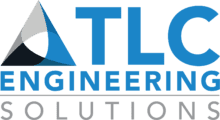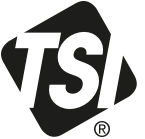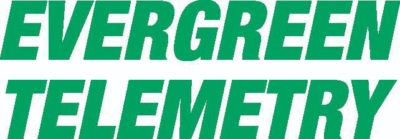
Technical Program
Attendees earn AIA LU, USGBC LEED General Education, CxA and EMP continuing education credits for presentations.
WEDNESDAY, MAY 1, 2024
- 7:00 a.m. Registration Open
- 7:00 a.m. – 8:00 a.m. Breakfast
- 8:00 a.m. – 8:45 a.m. Opening Plenary Session
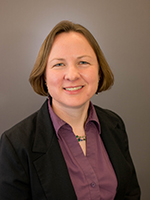
- Opening Plenary Session
Decarbonization & Commercial Buildings
Sarah Maston, P.E., BCxP, LEED AP, Colliers Project Leaders
The educational programming kicks off with Sarah E. Maston, P.E., of Colliers Project Leaders. With over 25 years of experience in mechanical engineering, commissioning, energy services, and project management, and many years of ASHRAE service, Ms. Maston is eminently qualified to give attendees an update on the interaction of several decarbonization standards currently in development.
- 8:45 a.m. – 9:45 a.m. Meet & Greet with Sponsors & Exhibitors – Expo Hall
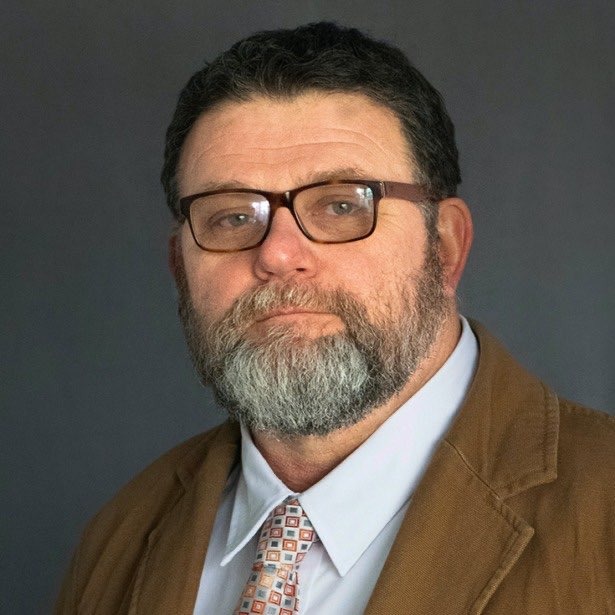
- 10:00 a.m. – 11:00 a.m.
- Town & Country Ballroom A
ACG Guideline Spotlight: Cx Tests & Observations, Functional & Otherwise
Jim Magee, CxA, Method Analytics Commissioning Process (MACx)
- Commissioning
Tests and observations are a central feature of the building systems commissioning process during the Construction
Phase, and the protocols for observing and testing the variety of specific building systems are continuously evolving due to system advancements, software tools, and even artificial intelligence. This session will explore and identify current methodologies as presented in ACG’s newest Cx guideline, focusing on what is, what is coming soon, and what tools are available to Cx professionals.


- 10:00 a.m. – 11:00 a.m.
- Town & Country Ballroom B
Building Performance Standards (BPS): A Golden Opportunity for Commissioning Providers
Alex Dews, LEED AP, BD+C, Institute for Market Transformation
Joshua Kace, Lawrence Berkeley National Laboratory
- Commissioning
- Energy Management
Emerging Building Performance Standards (BPS) will drive increasingly stringent performance targets for existing commercial buildings, representing a substantial market opportunity for commissioning providers. This session provides an overview of current/future BPS policies and implementation programs, and describes how different flavors of commissioning support BPS compliance at various stages of a building’s life cycle. Examples from BPS regions across the country will be used to illustrate these concepts, and you will learn how you can get involved in a national ‘Cx Catalyzer’ effort.
- Overview of how building performance standards work
- Understanding of where BPS have been passed, and where they are being developed
- Implementation overview from the city and federal scale
- Highlights of how the industry can help to shape BPS policy development

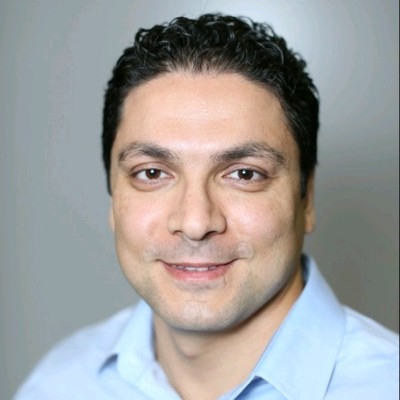
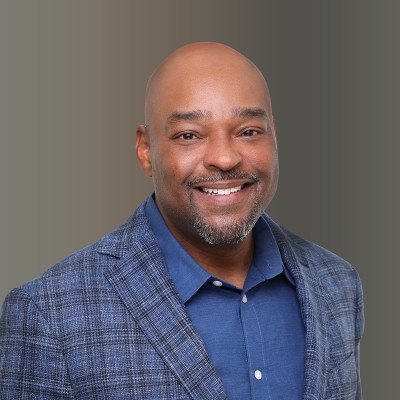
- 10:00 a.m. – 11:00 a.m.
- Town & Country Ballroom C
Leveraging Technology to Automate the Commissioning and TAB Processes in Healthcare Facilities
Frank Shadpour, PE, CxA, ASHRAE, SC Engineers
Sasan Asadyari, Scripps Health
Hollis Gentry, Sharp HealthCare
- Technology
- TAB/IAQ
- Commissioning
Technology is continuously changing the way healthcare is delivered, managed, and optimized. Shifting from traditional methods to innovative, technological strategies to automate the commissioning and TAB processes not only saves time and money but also enhances quality and performance. Join owners, engineers, and commissioning authorities representing California’s leading healthcare organizations to review current, cutting-edge tools and practical, real-world applications of these processes as well as explore future capabilities of artificial intelligence to further enhance commissioning outcomes.
- Understand the basics of the automated commissioning and TAB processes.
- Explore technologies used in automated commissioning.
- Learn about artificial intelligence applications in commissioning.
- Analyze real-world examples of automated commissioning.

- 10:00 a.m. – 11:00 a.m.
- Town & Country Ballroom D
The Challenges of Labor Management and Talent Acquisition for Commissioning providers
Tony DiLeonardo, CxA, LEED AP, Wick Fisher White
- Commissioning
- Business
Commissioning projects face additional hurdles due to disruptions in the equipment supply chain, leading to constant delays in construction schedules. Juggling multiple projects becomes increasingly complex when faced with the uncertainty brought about by supply chain issues. Managing the labor force effectively under such circumstances requires adaptability. This presentation will dive into the details of commissioning challenges with managing labor, retaining and recruiting talent for commissioning and explore potential solutions.
- Learn the different types of commissioning providers available
- How to manage your labor force with construction delays
- How to manage your labor force to accommodate supply chain issues while maintaining the schedule
- How to recruit, develop, train and retain younger commissioning staff
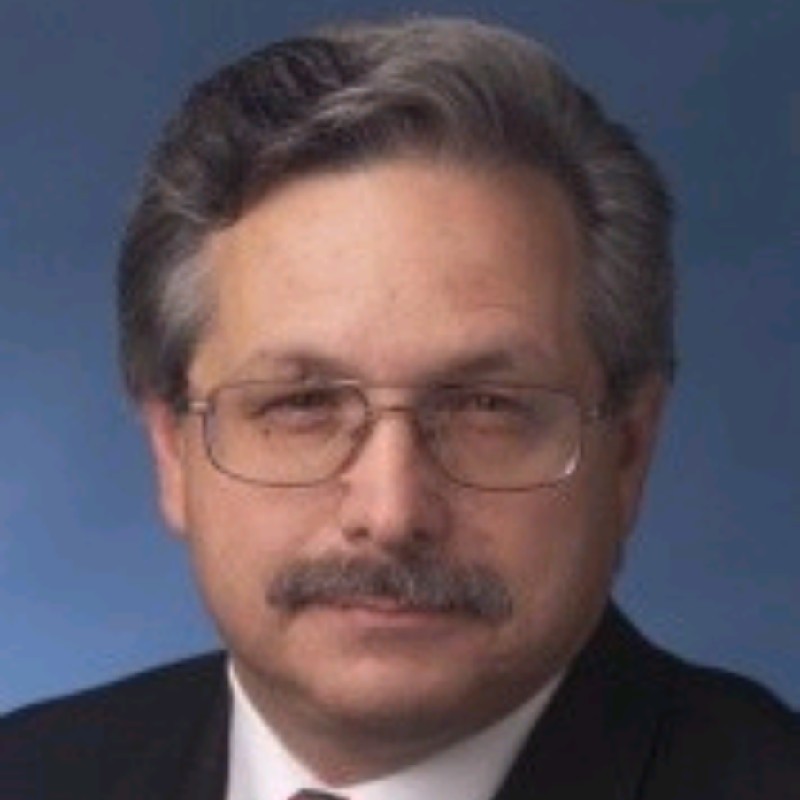
- 11:15 a.m. – 12:15 p.m.
- Town & Country Ballroom A
The Best Bang for your Buck – Factory Acceptance Testing
John Hitsos, PE, CxA, Jacobs
- Commissioning
Factory acceptance testing (FAT) is often considered not worth its expense and omitted from project testing, or relegated to a non-monitored, high level performance check by the vendor. A properly detailed FAT, working with preplanned and pre-approved test protocols, can significantly reduce installation and field testing time. By sending the correct project team/personnel to witness the FAT, including the facility operations personnel and the commissioning agent, along with the design engineer and the applicable contractor, important issues can be identified that could not be picked up in the submittal review process.
- Understand when an FAT is truly important and to make sure it provides the maximum bang-for the buck
- The logistic and assets needed to conduct a proper FAT
- Evaluation of the Installation and Operation needs of the Equipment being Tested in the Factory
- How the FAT can fit into a wholistic project Test Plan
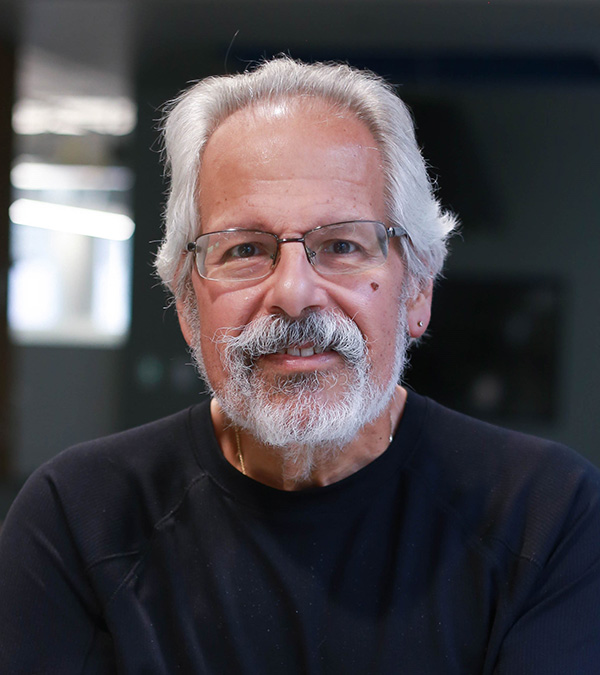
- 11:15 a.m. – 12:15 p.m.
- Town & Country Ballroom B
LEED v5 O+M: This is Definitely not Your Father’s Buick
Al LaPera, CxA, EMP, Kimley Horn
- Commissioning
LEED v5 for Operations and Maintenance (O+M) rating system for existing buildings has been changed radically. The
newest version of LEED, it marks a transformative milestone in the built environment’s alignment with a low-carbon future and addresses critical imperatives such as equity, health, ecosystems and resilience. This session will start to peel this new onion, one layer at a time.
- The new LEED v5 approach which now includes not only its normal cast of characters, but now addresses Carbon, Health, Resilience and Equity!
- LEED v5 will align with the definition set up , including requirements for LEED Zero Carbon, and Platinum level projects that specify low to no operational GHG emissions to help the industry coalesce impactful strategies
- How LEED v5 O+M is designed to deliver an understandable, actionable, and transformational rating system with a clear roadmap for progressive actions that facilitate LEED certification. The new version now offers industry benchmarking and scoring to reward performance while maintaining a measured data-driven approach to certification
- How this will assist in help active companies climate action plans
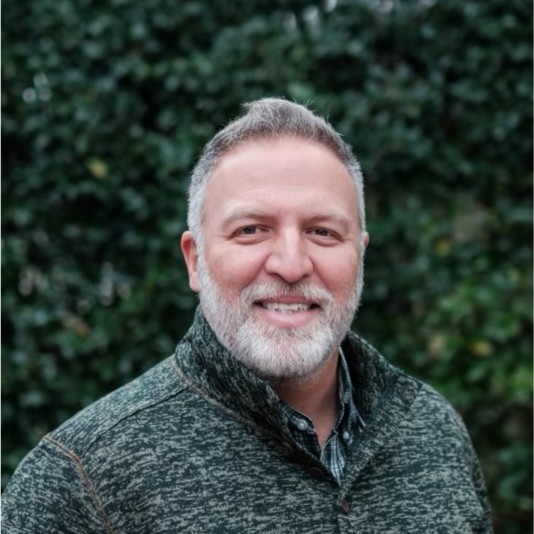
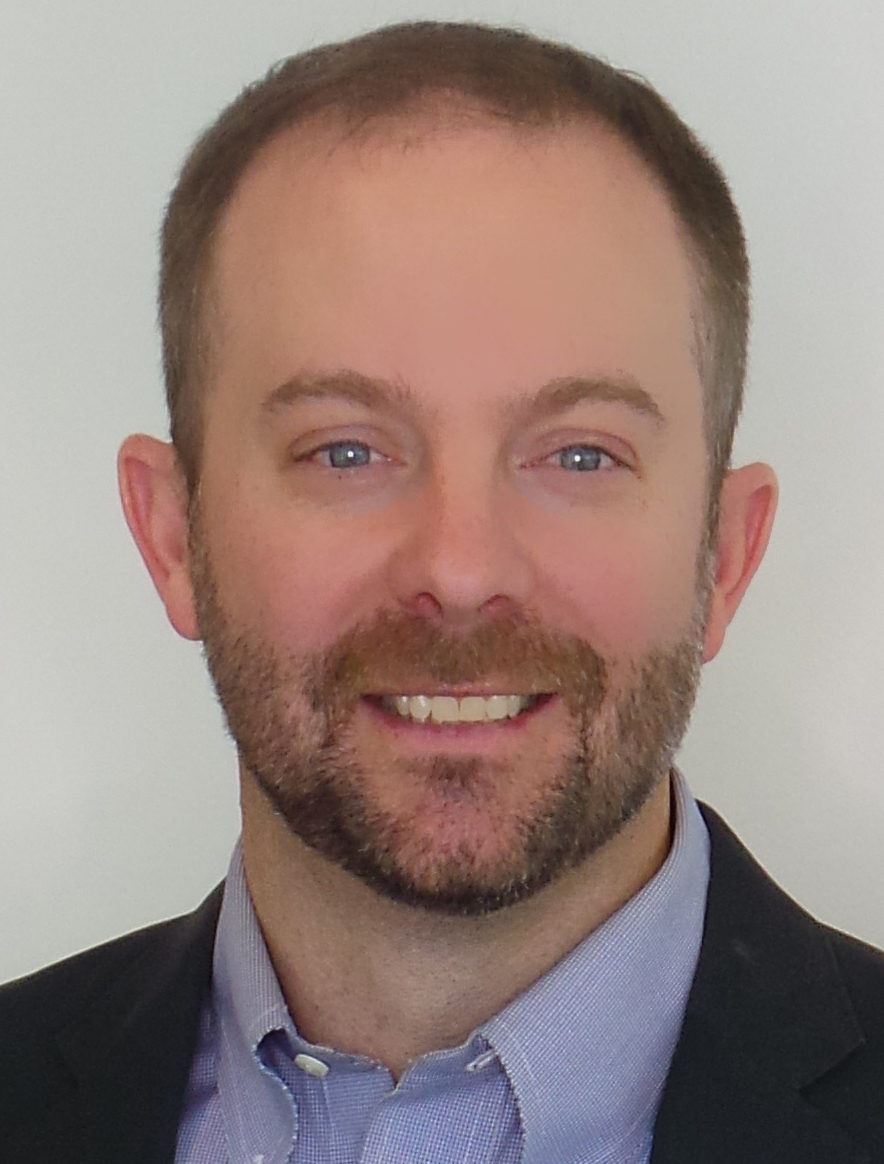
- 11:15 a.m. – 12:15 p.m.
- Town & Country Ballroom C
Commissioning for Owners: A Roadmap to Success
Derek De Jesus, CxA, ACG Education Committee Chair
Darren Draper, PE, CxA, Epsten Group, Salas O’Brien Company
- Commissioning
This presentation will delve into the critical decision of when commissioning is essential, unpack the variables that shape scope definition, and provide insights into pricing variations among CxA firms. Moving beyond the selection stage, we’ll equip you with effective strategies for managing and collaborating with your CxA. Remember, hiring a CxA is not the
finish line; it’s just the start.
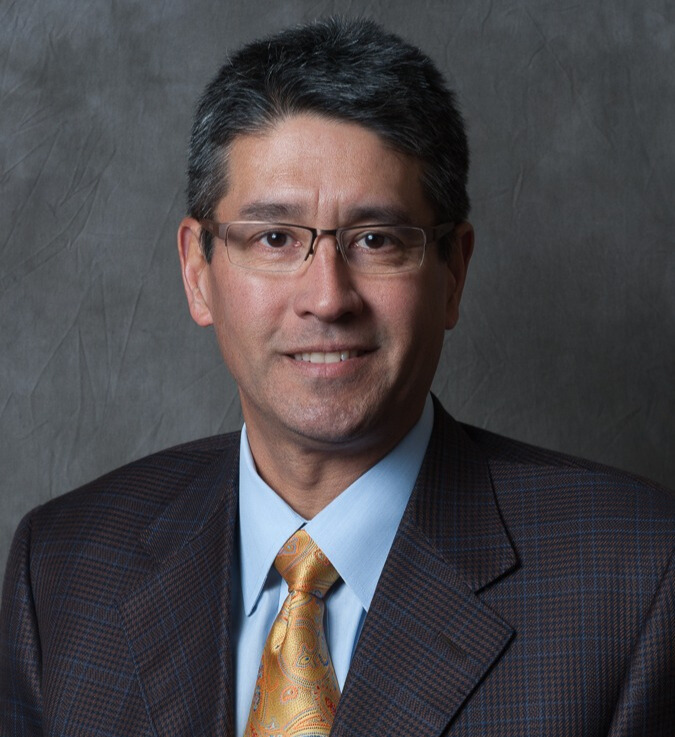
- 11:15 a.m. – 12:15 p.m.
- Town & Country Ballroom D
Test, Adjust & Balance; Lessons Learned for Engineers, Cx & Energy Providers – 2024
Jim Hall, PE, Systems Balancing
- TAB/IAQ
There are project design and construction-related challenges that are encountered during the testing, adjusting, and balancing (TAB) process. A few examples are equipment selection, system layout for testing and maintenance access, and project scheduling. This presentation offers solutions and ideas to help overcome these and other challenges that will help optimize system performance and prove that design intent has been met.
- Understand the proper use, application, and limitations of the TAB instrumentation.
- Understand what is accurate, useful and meaningful data that is obtained in the field vs. laboratory data for use on their project.
- Gain an understanding of HVAC systems and the TAB/measurement process; how can systems be set up to allow for proper data collection.
- Promote a project team approach to address schedule challenges, design alternatives as it relates to balancing device locations, equipment usage and HVAC system operation.
- 12:15 p.m. – 1:45 p.m. Lunch in Expo Hall
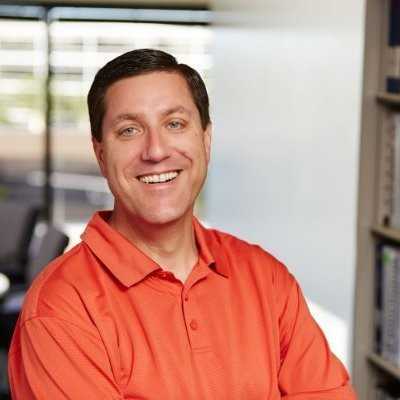
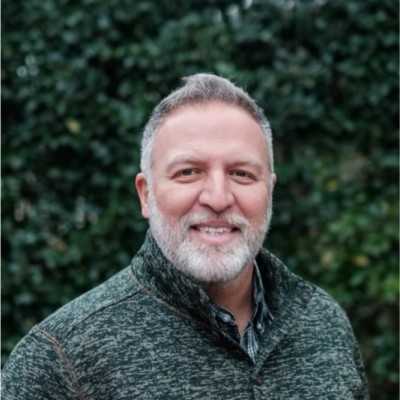
- 2:00 p.m. – 3:00 p.m.
- Town & Country Ballroom A
Pre-functional Checklists… Is There a Better Way?
Steve Leight, PE, CxA, EMP, Commissioning Excellence LLC
Derek De Jesus, CxA, ACG Education Committee Chair
- Commissioning
Since the development of ASHRAE Guideline 0, pre-functional checklists have been a key component of the commissioning process. For almost as long – and exacerbated by electronic media – commissioning authorities have been challenged with obtaining pre-functional checklists that meet their intended purpose.
This presentation will discuss the history of quality processes, the differences between QA and QC, and will present ideas on how to manage the pre-functional checklist as a tool that benefits the installing contractor as much as the CxA.
- Explain the difference between quality assurance and quality control and how those terms relate to building commissioning.
- Recognize language in project specifications that can lead to quality control challenges.
- Modify commissioning proccess procedures to improve accuracy of completed pre-functional checklists.
- Improve the overall quality control process using commissioning skills.
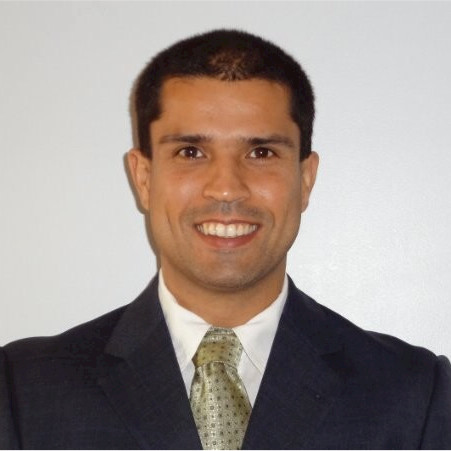

- 2:00 p.m. – 3:00 p.m.
- Town & Country Ballroom B
Combining Distributed Energy Resources, Load Management and Participation in Utility Programs to Achieve Sustainability, Resiliency and Economic Goals
Itamar Lopes, MBA, PMP, Siemens Smart Infrastructure
David LaTour, CEM, Siemens Smart Infrastructure
- Energy Management
This session will provide a real-world example from a microgrid project implemented in Princeton / NJ where a combination of DERs implemented together with a service agreement and dynamic load management by the Building Management System (BMS), enabled achievement of resiliency and sustainability goals while lowering energy costs.
- Identify the major steps to implement DERs and build a Microgrid
- Understand how DERs can improve system resilience and generate utility savings
- Understand how DERs can participate in utility programs, and how the programs can be stacked
- Appreciate the potential impact of combining improvements on building efficiency with optimization on the operation of the DERs and Microgrid


- 2:00 p.m. – 3:00 p.m.
- Town & Country Ballroom C
Case Study: The Vital Role of the Building Owner in QA and Cx Programs at the University of Rochester Emergency Department Expansion
Alex Kozinets, Facility Grid
Rachel Stuckey, University of Rochester
- Commissioning
- Technology
Join the University of Rochester (UR) and Facility Grid for a discussion on the vital role of the building owner in QA, QC, and Cx programs for this significant emergency department expansion and patient tower project. Learn how UR is incorporating total project commissioning and how that is leading to consistency across projects, faster turnover, and improved O&M training. Gain insights into their strategies for swift issue resolution and enhanced project efficiency. Don’t miss the insightful case study.
- Understanding the role of the building owner in Quality Assurance (QA)
- Understanding the role of the building owner in Quality Control (QC)
- Understanding the role of the building owner in Commissioning (Cx) programs within significant construction projects like emergency department expansions and patient tower projects
- Exploring the incorporation of total project commissioning and its impact on project consistency, turnover speed, and the enhancement of Operations & Maintenance (O&M) training in construction projects.


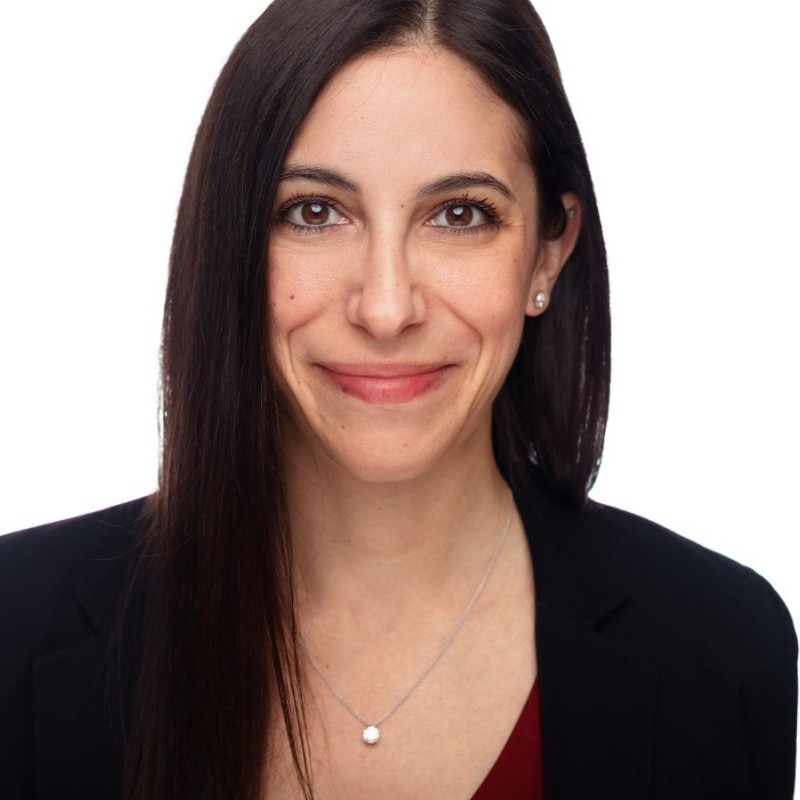

- 2:00 p.m. – 3:00 p.m.
- Town & Country Ballroom D
Diverse Vision & Sustainable Solutions: A panel Discussion by Leaders in Commissioning and Energy Management
Michelle Shadpour, President-Elect, ASHRAE San Diego Chapter
Leah Goldman, Illumina
Ariana D. Axelrod, PE, Control Technologies
Sarah Maston, P.E., BCxP, LEED AP,
Colliers Project Leaders
- Commissioning,
- Technology
- Energy Management,
Commissioning and energy management play a pivotal role in the performance and operation of a facility. While consulting engineers and contractors influence system selection, it is the commissioning and ongoing management that ultimately dictates a building’s operational performance. Join our exciting all-women panel discussion as leading experts explore the cutting-edge advancements in automated commissioning, artificial intelligence, and decarbonization for building applications. The panelists will additionally address how they became industry experts in a male dominated field regardless of gender.
- Be familiar with the role Cx and building management has in the operational performance of a facility
- Explore how artificial intelligence and automated commissioning can be leveraged in commissioning
- Discover the unique challenges of commissioning decarbonized buildings
- Discuss available resources young professionals can tap into when faced with challenges
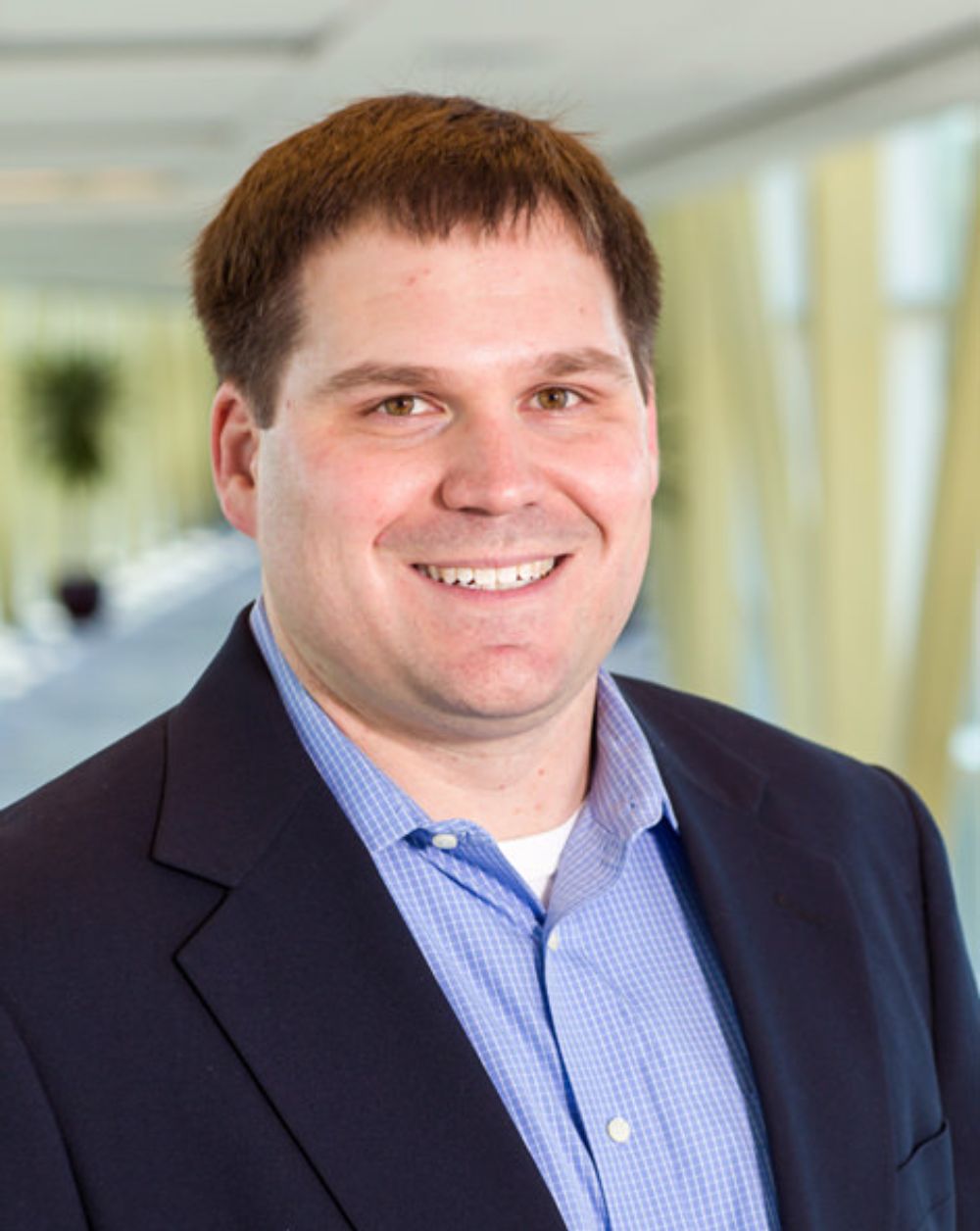

- 3:15 p.m. – 4:15 p.m.
- Town & Country Ballroom A
MEP Coordination and the Commissioning Process: Extraordinary Success or Horrible Failure?
Justin Garner, PE, CxA, TBE, Engineered Air Balance Co., Inc.
Mark McGlathery, McCarthy Building Companies
- Commissioning
As the building industry moves toward new technologies and more complex control strategies, the Commissioning Process (Cx) as defined by ASHRAE is critical to the energy performance and operational goals of the facility. The success of Cx depends on proactive planning between the Cx Provider and the Contractor’s team. This seminar will demonstrate how a general contractor and Cx provider should work together to ensure a successful (and profitable) project delivery.
- Identify elements of the Cx Process that require collaboration between the Cx Provider and the Contractor.
- Understand high level strategies for coordination and scheduling of construction activities to support a successful and efficient Cx Process.
- Identify the multiple parties involved with different mechanical, electrical and plumbing systems that must work collaboratively at different stages to deliver a successful Cx Process.
- Provide a basic MEP Installation, Startup, Testing and Training workflow that can be implemented on any project.
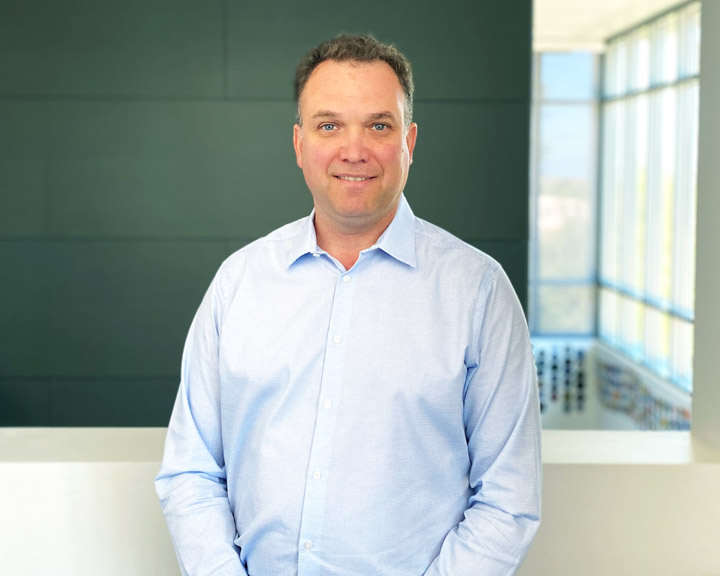
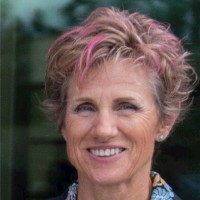
- 3:15 p.m. – 4:15 p.m.
- Town & Country Ballroom B
Support Your Decarbonization Plan with Retro-commissioning
Clifford Alberts, AESC, Inc.
Susan Freed, County of San Diego
- Commissioning
The County of San Diego is expanding their sustainability efforts to include carbon savings. Electrifying natural gas
equipment is a priority, though solutions can be unexpectedly challenging. This presentation presents early findings and
efforts to solve challenging electrification efforts.
- How RCx supports decarb goals
- How to add electrification to RCx list of measures
- What the efficiency (COP) relevance is when fuel switching
- Familiarity with tools to assess emissions impacts
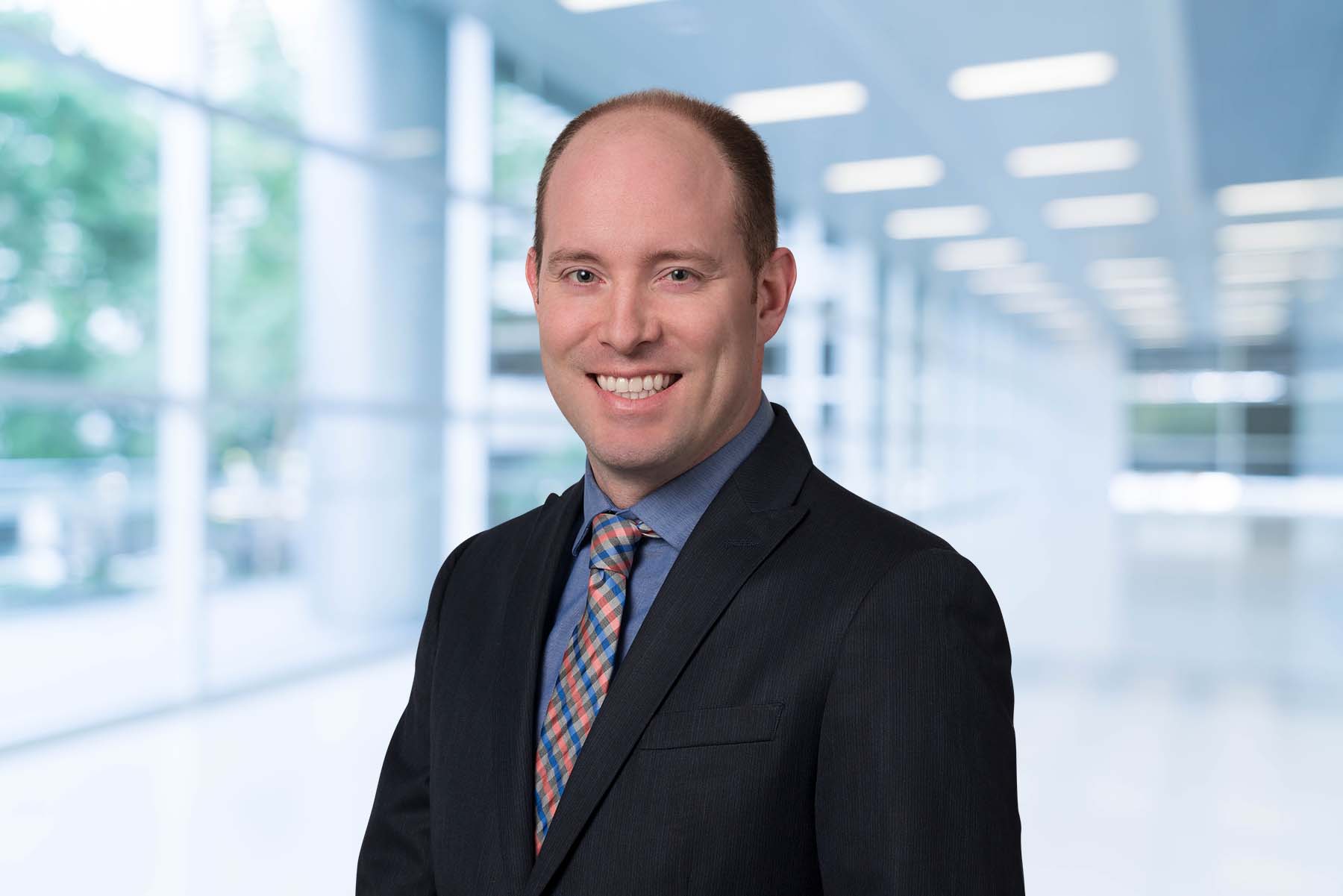
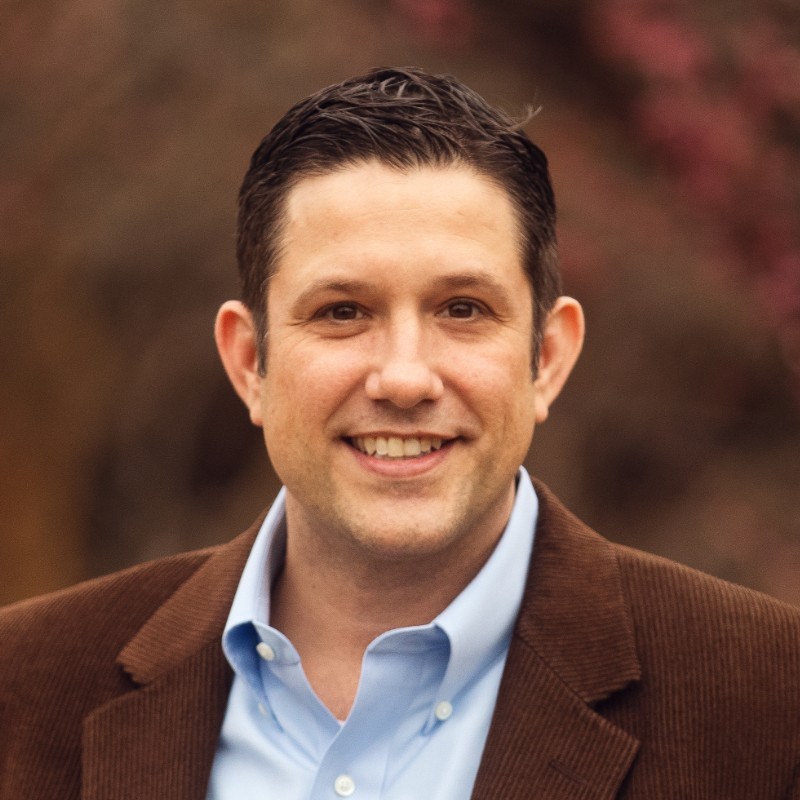
- 3:15 p.m. – 4:15 p.m.
- Town & Country Ballroom C
Finish with Confidence – how to leverage automated testing and FDD to Close Out Projects Economic Goals
Kenny Reed PE, CCP, CEM, LEED AP, SES
Derek McGarry, PE, OTTO
- Commissioning,
- Technology
Traditional construction turnover and closeout can be a frustrating process for project teams. Scheduling, system pre-testing, and seasonal changes to the system can all present challenges to closeout a project smoothly. Leveraging technology for automated testing and utilizing remote monitoring and fault detection and diagnostics can improve timelines and finetune systems. This presentation will define a roadmap leverage technology to relieve the pain of the final weeks of your projects.
- Define the automated testing process for new construction
- Describe the barriers to successful system testing and turnover of critical systems
- Compare the use of fault detection and diagnostic remote monitoring to traditional BMS alarm and interfaces
- Identify opportunities to leverage FDD to improve seasonal testing and closeout outcomes for projects
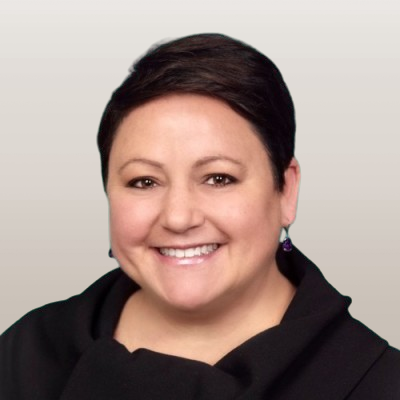
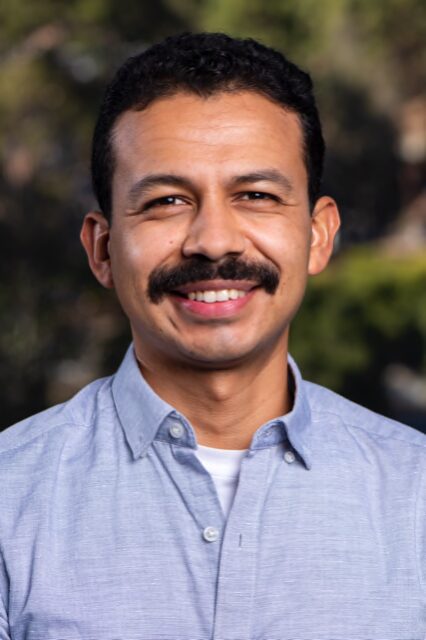
- 3:15 p.m. – 4:15 p.m.
- Town & Country Ballroom D
Demand Flexibility: The Must-Have Skill for Future Facilities Professionals
Jen Szaro, Association of Energy Services Professionals
Armando Casillas,
Lawrence Berkeley National Laboratory
- Business
- Energy Management
Realty investment groups, utilities, and disaster resilience experts who are looking out to the next ten years, all have one subject on the tip of their tongues: demand flexibility. The U.S. Department of Energy & AESP are creating public educational courses to help you get ready for the next big thing. Come find out how demand flexibility helps you marry renewables, efficiency, pricing and more to make your buildings resilient and efficient assets.
- Understand what demand flexibility is, and how it applies to facility manager short and long-term responsibilities
- Understand what FLEX is and how you can use its content to grow as a professional
- Learn how the latest advancements in Grid-Interactive Efficient Buildings (GEBs) can help you gain greater insight and control over facility power use
- Evaluate available demand flexibility solutions according to your facility needs.

- 4:30 p.m. – 5:30 p.m.
- Town & Country Ballroom A
An Exploration of Progress Tracking Approaches in Commissioning
Jacob Terry, CxAlloy
- Commissioning
- Technology
For the past year CxAlloy has been collecting and reviewing approaches to tracking and reporting on commissioning progress. In this session we’ll explore real-world examples of commissioning progress trackers. We’ll discuss tradeoffs to levels of detail, effective presentation options, methods for keeping progress up-to-date, and more.
- Explain best practices for visual presentation of commissioning progress.
- Discuss pros and cons of different levels of granularity in tracking.
- Provide a framework of key principles to use when developing a progress tracker.
- Describe multiple approaches to keeping progress data up-to-date.

- 4:30 p.m. – 5:30 p.m.
- Town & Country Ballroom B
High Efficiency Elementary School: A Case Study in Making it Work
Vince Sage, P.E., CxA, EMP, CEA, LEED AP, Northwest Engineering Service, Inc
- Commissioning
- Energy Management
The desire for increased energy efficiency has pushed designers away from tried-and-true VAV reheat systems. This is a case study of an elementary school using heat recovery ventilators coupled with fan coil units in each zone. It includes lessons learned from the numerous problems that turned up during commissioning.
- Learn why pressure independent control valves (PICV) are not a good choice for minimum flow bypass.
- Learn how to reliably detect status of electrically commutated motors (ECMs).
- Learn how to detect failure of a remote condensate pump.
- Learn to avoid pitfalls regarding access with ERV/FCU systems

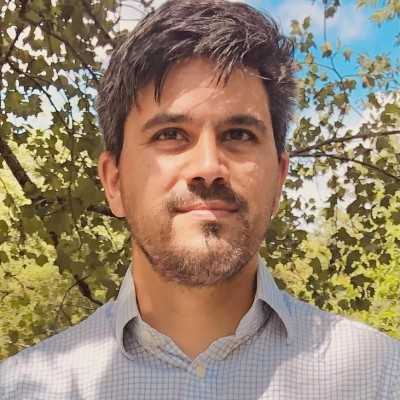
- 4:30 p.m. – 5:30 p.m.
- Town & Country Ballroom C
Commissioning for Sustainable Indoor Air Quality: University of Georgia Case Study
Erick Malmstrom, SafeTraces
Gordon Stead, University of Georgia
- Commissioning
- TAB/IAQ
- Technology
Prompted by major cost, compliance, and capital market drivers, building owners confront unprecedented pressures to decarbonize real estate portfolios and ensure healthy indoor environments.
This panel will consist of three main sections:
1. Overview of major cost, compliance, and capital market drivers for energy efficiency and IAQ
2. Description of sustainable indoor air quality-focused commissioning strategies, including those leveraging emerging technology, in building portfolios
3. Deep dive into the University of Georgia’s technology-enabled efforts to improve health, energy, and financial performance and leverage resulting data for energy utility rebate programs
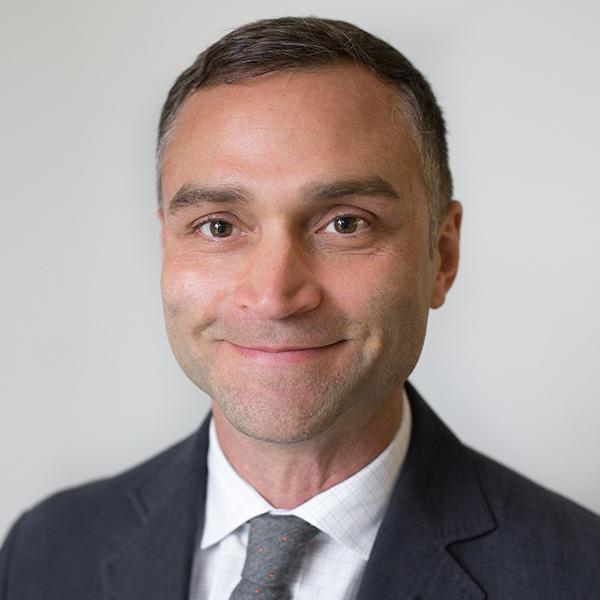
- 4:30 p.m. – 5:30 p.m.
- Town & Country Ballroom D
Integrated System Testing: Electrical
Jesse Felter, Smith Seckman Reid, Inc.
- Commissioning
As equipment and system technology become more complex serving client needs for interconnectivity, so does the practice of integrated system testing (IST). The purpose of this presentation is to identify standards driving the needs
for IST’s, guidelines that provide information useful to the Commissioning Team, and consider specific examples of
possible IST from the perspective of the electrical CxA.
- Ability to identify code and standard requirements for Integrated System Testing relevant to electrical commissioning.
- Ability to identify Guidelines and other resources that aid the CxA in executing Intregrated System Testing.
- Ability to identify what systems would be integrated with specific scope of work for the CxA.
- An understanding of necessary coordination for Integrated System Testing and possible pitfalls for the Cx Team to be aware.
- 5:30 p.m. – 7:00 p.m. Reception in Expo Hall
THURSDAY, MAY 2, 2024
- 7:00 a.m. Registration Open
- 7:00 a.m. – 8:00 a.m. Breakfast

- 8:00 a.m. – 9:00 a.m.
- Town & Country Ballroom A
Commissioning and Special Inspections for Smoke Control Systems
Michael Mantai, PE, System WorCx
- Commissioning
This presentation will discuss the role of a commissioning provider in testing smoke control systems and acting as a Special Inspector as required by Code. It will present the three basic types of smoke control methods (airflow, pressurization and exhaust) and provide examples of the systems used to accomplish each method. It will discuss how to commission these systems and avoid many of the pitfalls and common problems, using real world examples from prisons, hospitals and atria.
- Identify the three basics methods of smoke control used in smoke control system design.
- Understand Code and NFPA 92 requirements as they relate to commissioning.
- Understand how to apply the commissioning process to smoke control systems.
- Identify typical pitfalls and problems encountered when commissioning smoke control systems.
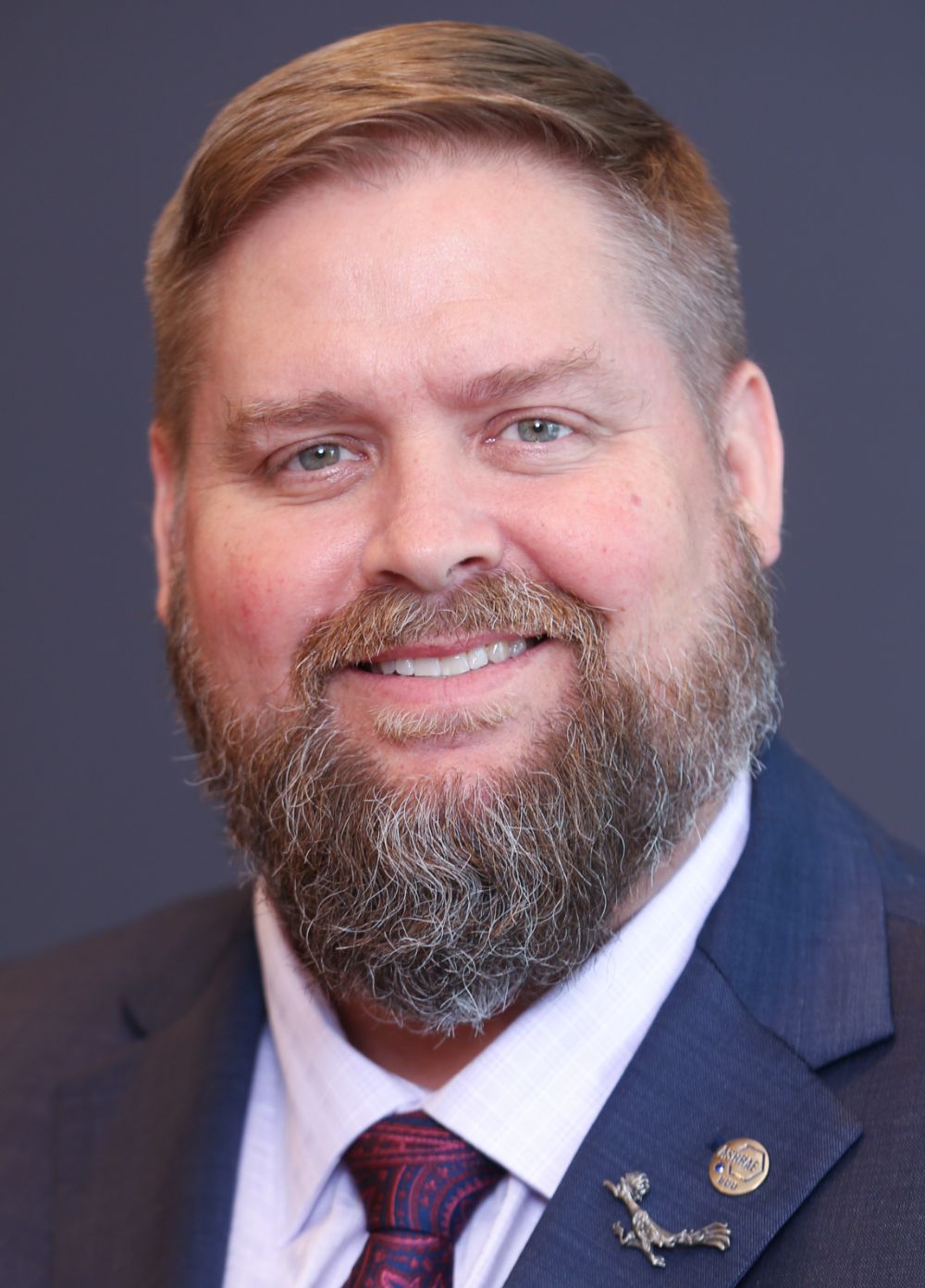
- 8:00 a.m. – 9:00 a.m.
- Town & Country Ballroom B
ASHRAE Standard 241 – Control of Infectious Aerosols – Impact on Cx
Wade Conlan, PE, CxA, BCxP, LEED AP, Hanson Professional Services Inc.
- TAB/IAQ,
- Commissioning,
ASHRAE released Standard 241, “Control of Infectious Aerosols” which discusses the ability of the HVAC system to provide equivalent clean air in Infection Risk Management Mode (IRMM). The assessment, planning, and implementation, by a CxA or EMP, should be completed for new or existing spaces, buildings, and HVAC systems that serve those spaces. This session will review the contents of the standard and then use case studies to highlight the impact commissioning providers have on this process.
- Understand the contents of Standard 241
- Understand the components of equivalent clean air
- Know the steps for Assessment, Planning, and Implementation of Std 241
- Understand how to create a Building Readiness Plan
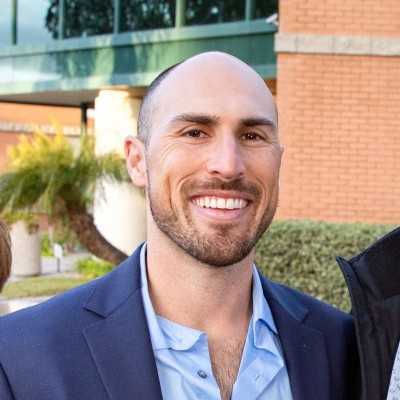
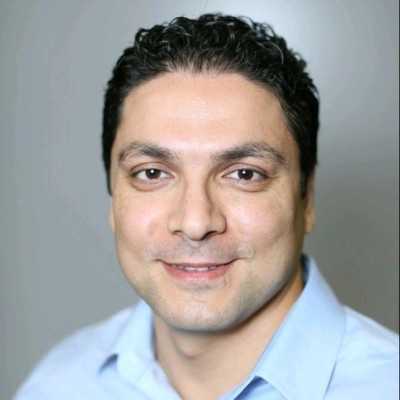
- 8:00 a.m. – 9:00 a.m.
- Town & Country Ballroom C
Case Study: Automated Commissioning – Scripps Health Towers
Steven Shadpour, BCxP, CxA, CPE, SC Engineers
Sasan Asadyari, Scripps Health
- Commissioning,
- Technonlogy
This presentation explores the transformative journey of building commissioning over the past decade at Scripps Health in La Jolla, offering insights into its future trajectory. Annually treating more than 600,000 patients with the dedication of 3,000 affiliated physicians and over 16,000 employees across its five acute-care hospital campuses, Scripps Health stands as one of the largest non-profit and most prestigious healthcare organizations in Southern California.
- Assess key challenges and opportunities associated with commissioning healthcare facilities.
- Explain the role data analytics and digital systems play in healthcare facility commissioning.
- List the ways commissioning ensures the safety and compliance of healthcare facilities with evolving regulations and standards.

- 8:00 a.m. – 9:00 a.m.
- Town & Country Ballroom D
Harnessing Untapped Energy Saving Through Building Plugged Outlet Automation
Siddhartha Chatterjee, MBA, Honeywell Building Technologies and Automation
- Energy Management
Discover how new plug outlet technology makes it possible to gain full visibility, control and management of a commercial buildings plug-in equipment, and how significant untapped energy savings and insights are now available to energy and building managers. These new developments in Building automation enable energy control and saving down to a single receptacle or as wide as a whole University campus or modern hospital, or even more with cloud connectivity allow multiple estates globally to be ‘Connected’.
- Understand the new combination of technologies that enable the humble plug outlet to become a powerful modern edge device
- Learn about new developments in Building and Energy Management Systems
- Discover various case studies across different vertical sectors, illustrating the value proposition of plug out automation in commercial Buildings
- Explore the future of multi-site building automation through the onset of cloud-based control and management, allowing multiple locations to be controlled from a single dashboard.


- 9:15 a.m. – 10:15 a.m.
- Town & Country Ballroom A
Empowering Commissioning Agents: Navigating Healthcare Facility Codes and Standards, with a Focus on ASHRAE 170-2021 and Beyond
Amit Bhansali, WSP
Robert Langford, CxA, HCA Healthcare
- Commissioning
Ensuring patient safety in healthcare demands strict adherence to comprehensive codes and standards governing facility design and operations. Commissioning Agents must not only comprehend system intricacies but also be aware of relevant codes. ASHRAE 170, crucial for healthcare ventilation, is adopted in some form in more than 43 states. The presentation’s goal is to empower agents with insights into ASHRAE 170-2017 versus 170-2021, and anticipating 2025 trends.
- Understanding the Significance of Codes in Healthcare Facilities
- Comprehensive Knowledge of ASHRAE 170-2021
- Application of Codes in Commissioning Processes
- Exploring the incorporation of total project commissioning and its impact on project consistency, turnover speed, and the enhancement of Operations & Maintenance (O&M) training in construction projects.
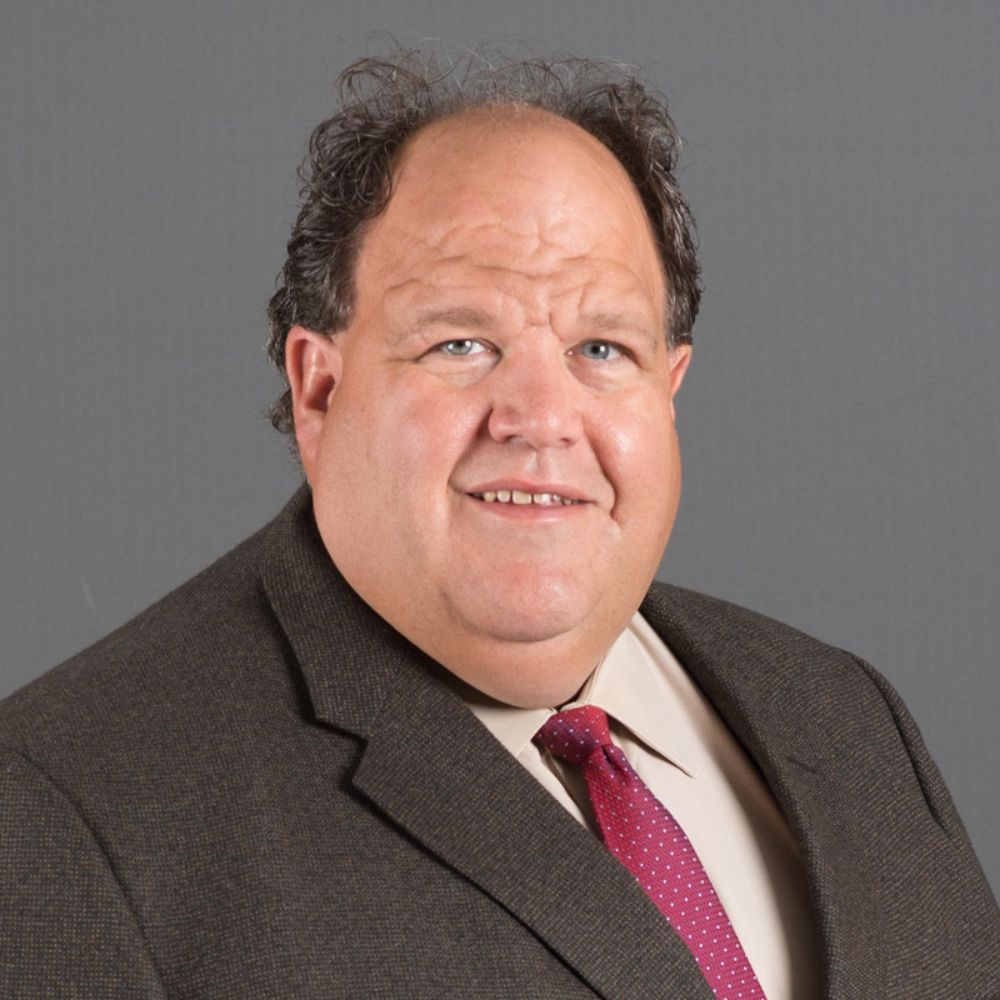
- 9:15 a.m. – 10:15 a.m.
- Town & Country Ballroom B
Battery Energy Storage Systems and Hazards To Be Aware Of [NFPA 855]
David LeBlanc, P.E. FSFPE, Jensen Hughes
- Energy Management
- Commissioning
Stationary Energy Storage Systems are dramatically increasing in buildings and as separate structures, and these systems are only gaining in popularity and are here to stay. These Energy Storage Systems (ESS) provide benefits for utility companies, carbon neutral buildings as part renewable energy, and overall as part of a green energy option. With all those positive benefits, there are also hazards that need to be mitigated, including challenging fires and potential explosions. NFPA 855, Standard for the Installation of Stationary Energy Storage Systems, provides the requirements for the Hazard Mitigation Analysis, fire protection systems, systems integrations, and system commissioning. The presentation will provide an overview of the chemistry of Lithium-Ion Batteries, NFPA 855, Hazard Evaluation including real world incidents that occurred, general safety approach, commissioning of the fire and life safety systems, and how NFPA 4 Integrated Testing of Fire and Life Safety Systems maybe required.
- Detail the important components of the NFPA 855, Standard for the Installation of Stationary Energy Storage Systems.
- Articulate the Hazard Mitigation Analysis process.
- Describe the ESS System Commissioning Process.
- Identify the chemistry of lithium-ion batteries.
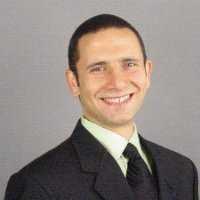
- 9:15 a.m. – 10:15 a.m.
- Town & Country Ballroom C
M&V + MBCx = Lower Operational Costs
Victor Saeh, LEED AP BD+C, CxA, CEM, PCC, Smith Seckman Reid, Inc.
- Commissioning
Measurement and Verification (M&V) is a simple and effective service that can be utilized to set the foundation for an energy project and/or validate its results. Today there is a myriad of government legislation, media news, and corporate marketing surrounding energy and decarbonization. This presentation will simplify the process for any owner that is planning or has completed this type of project.
- Understand different M&V methodologies that can be applied to a healthcare setting and the “how, when, and why” they are most appropriately applied.
- Understand how Monitoring Based Commissioning (MBCx) services can add value to the owner’s Facility Maintenance Staff by continuously fine tuning controls and proactively identifying and prioritizing operational issues.
- The value to an organization or facility when M&V and MBCx programs are combined to provide any owner with powerful, accurate, and actionable data to better run their facilities in an optimized and sustainable way every day.
- Review case studies of facilities that have implemented such programs and the realized savings.
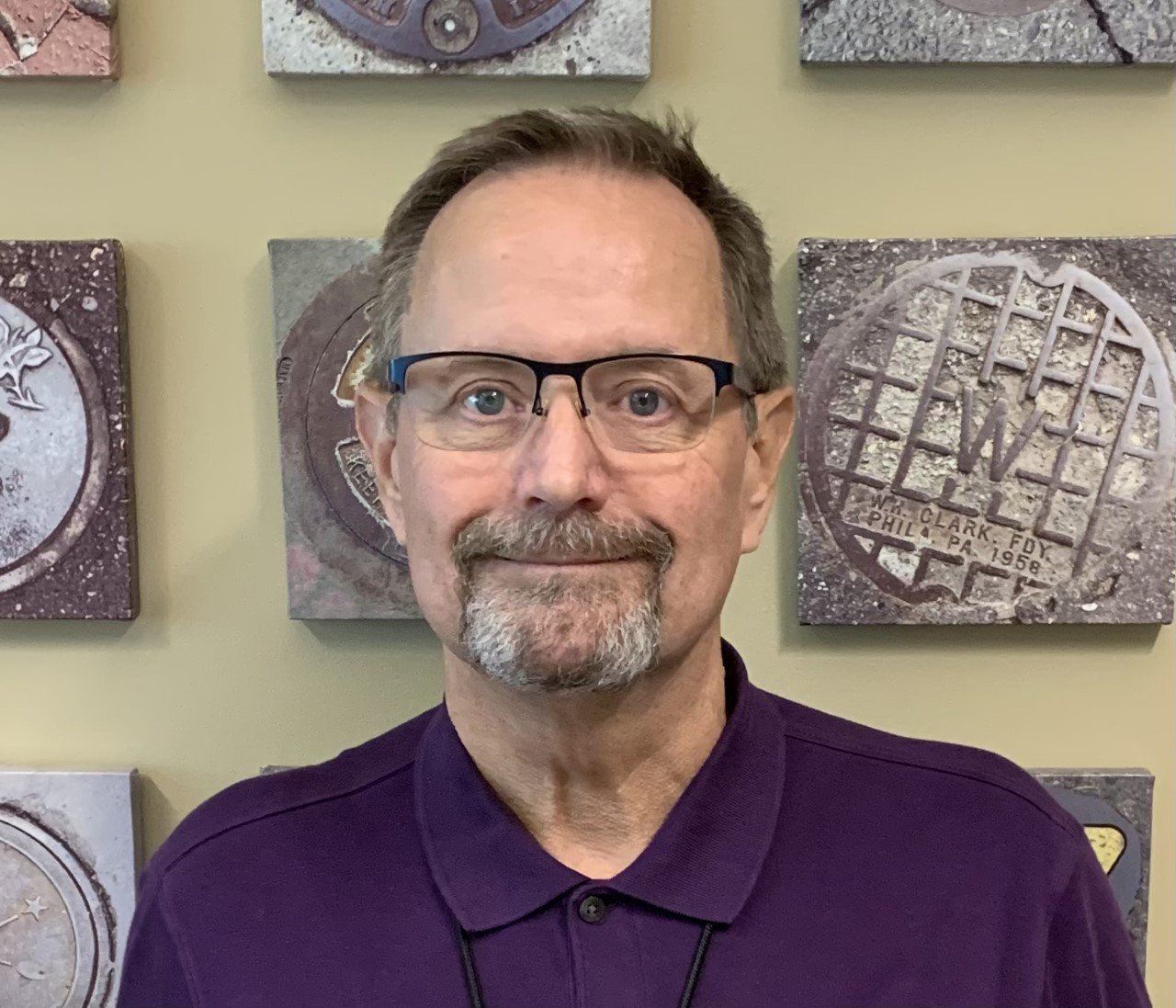
- 9:15 a.m. – 10:15 a.m.
- Town & Country Ballroom D
Building to Meet Dynamic Environmental Standards, Including Water Efficiency Construction Standards
Patrick Watson, Southern Nevada Water Authority
- Energy Management
On the west coast, buildings are required to meet a set of earthquake standards, on the gulf-coast building are required to build to hurricane standards. The desert Southwest should not be any different; drought and the aridification of the west is just a slower moving disaster. Southern Nevada has taken taken steps to influence cooling methods in buildings that are more water efficient. The presentation will cover legislative action that restricts evaporative cooling, commercial development’s reaction, and the result.
- Desert Southwest Aridification and building more sustainable buildings
- Commercial Development response to legislation.
- Cooling alternatives
- Water Resource picture for southern Nevada.


- 10:30 a.m. – 11:30 a.m.
- Town & Country Ballroom A
Efficiency Unleashed: How Energy Management Helped Two Facilities Reduce Cost and Carbon Emissions
Andrew Blauvelt, Atrius | Acuity Brands
Chelsea Davis, Atrius | Acuity Brands
- Energy Management
By utilizing software for energy management, emissions reporting and AI-enabled location data, Acuity Brands consolidated two of its regional facilities in Illinois. In this discussion, Sandeep Modhvadia and Chelsea Davis will dive into this case study and share how the project, in partnership with the DOE for their Better Plants program, led to a net cost savings of $783,000, energy savings of 850,000 kWng, and emission reductions of 430 metric tons of CO2e.
At the end of this session, the attendees will be able to…
- … explain the importance of data visibility for energy reduction projects.
- … understand how AI and cloud software can help energy engineers precisely measure, and accordingly respond to, project progress.
- … describe how carbon accounting can be combined with energy efficiency procedures to help organizations reduce time spent complying with carbon disclosure regulations, such as LEED buildings certifications.
- … share with their organization how initial investments into technologies such as carbon accounting can result in net savings.
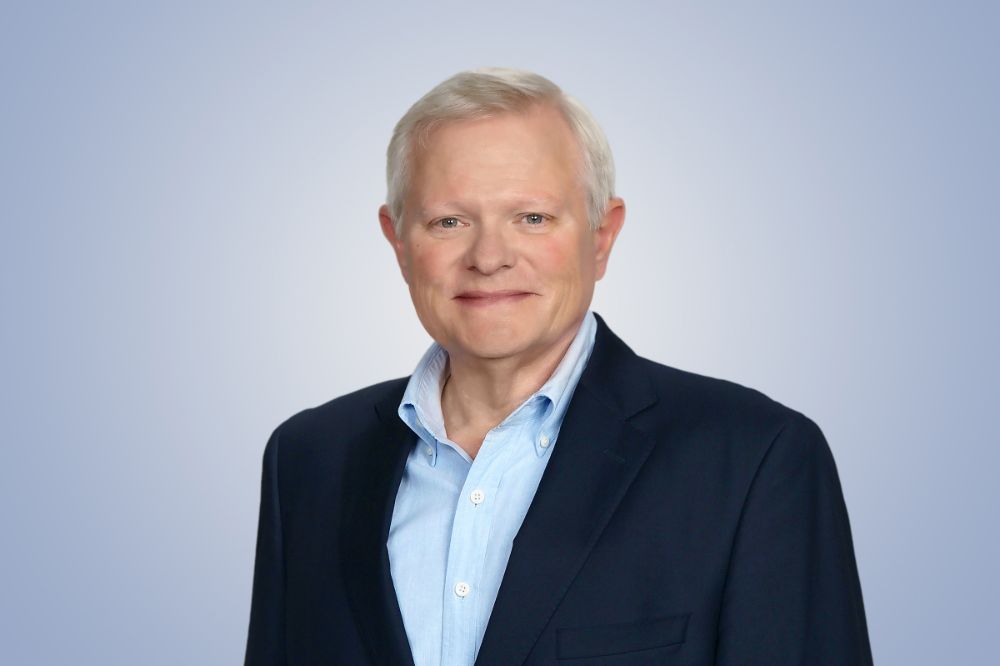
- 10:30 a.m. – 11:30 a.m.
- Town & Country Ballroom B
Energy Codes and BECx
Stephen Shanks, CxA, BECxP, NDT Level III, Salas O’Brien
- Commissioning
- Energy Management
Energy codes and recent updates to IECC and ASHRAE 90.1 include detailed design, construction, and documentation requirements for building enclosure commissioning. These include field verification and installation of insulation, fenestration, and air sealing of the building envelope to ensure improved thermal performance. This presentation will review evolving energy code requirements, assessment techniques to identify and mitigate thermal bridging, moisture, and air barrier performance issues, and strategies for energy code compliance.
- Describe the verification, testing, and documentation requirements in the building enclosure commissioning process.
- Identify the current energy code thermal and air barrier requirements for building enclosure commissioning.
- Detail the thermal and moisture performance assessment techniques during the design review.
- Summarize the air barrier design, construction, and documentation to comply with energy code enclosure commissioning requirements.

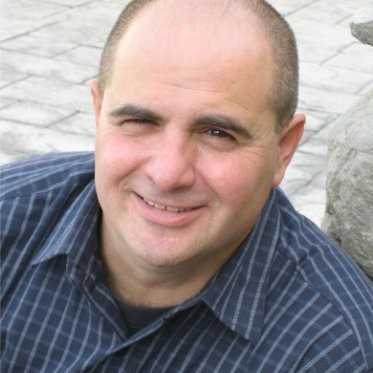
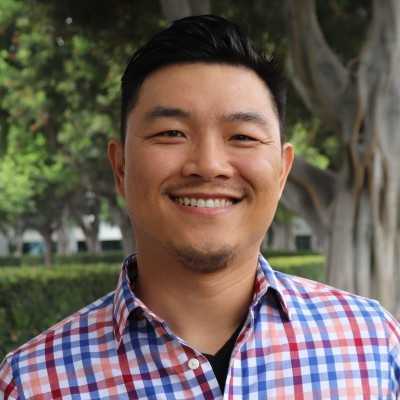
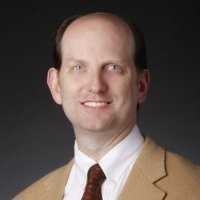
- 10:30 a.m. – 11:30 a.m.
- Town & Country Ballroom C
Guaranteeing Optimal Lighting Control System Performance [OPRs and Title 24]
Michael Scalzo, National Lighting Contractors Association of America (NLCAA)
John Busch, Leviton
Sam Hin, Performance Lighting Systems
Charles Knuffke, Legrand
- Commissioning
This session is an examination of the role, methodology, and impact that a commissioning agent, who can be a certified
Acceptance Test Technician (ATT), makes on California projects by helping ensure optimal lighting and lighting control system performance in alignment with OPRs and Title 24, Part 6 standards. (This can also be applicable to mechanical systems.)

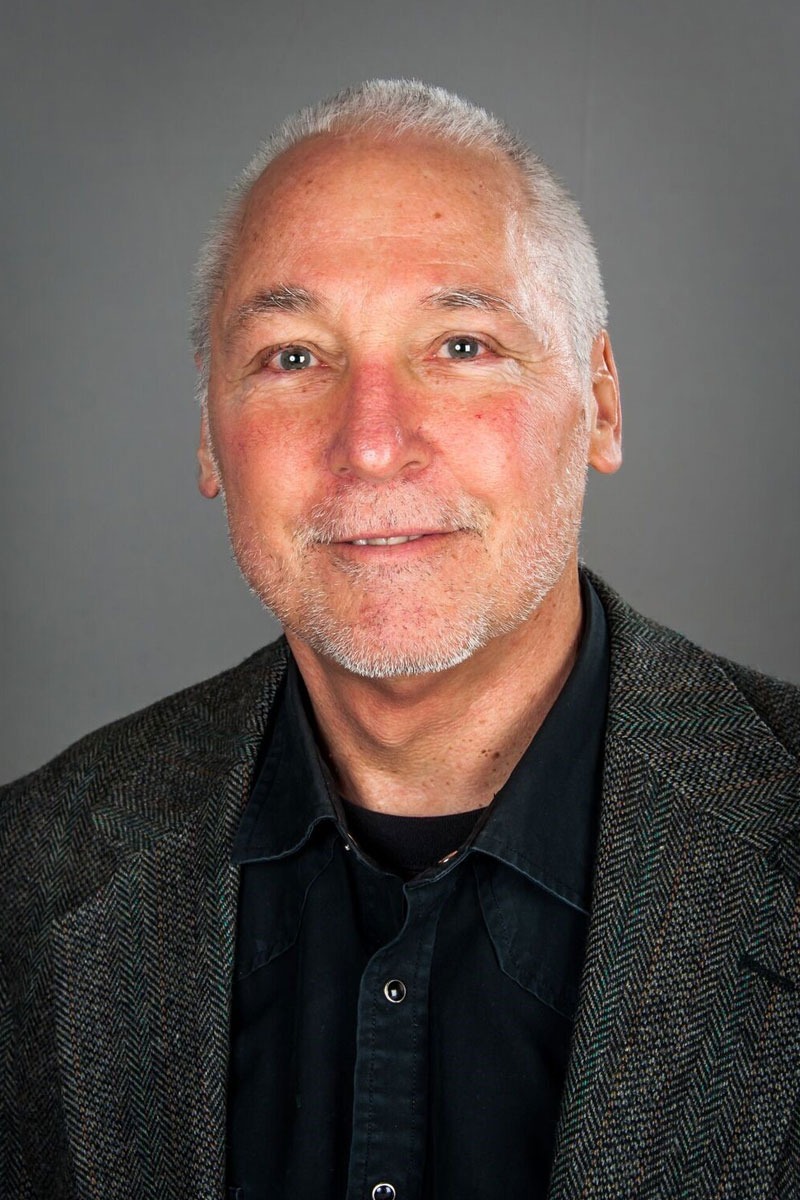


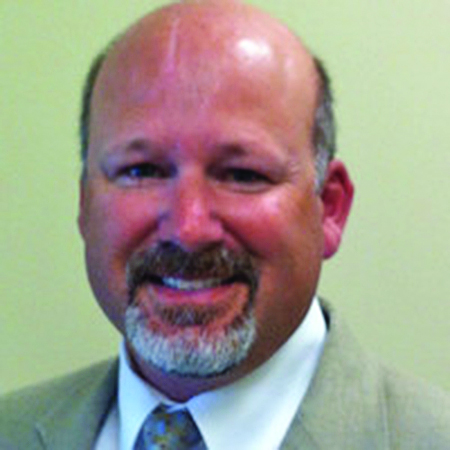
- 10:30 a.m. – 11:30 a.m.
- Town & Country Ballroom D
Commissioning Workforce Development
John Herboth, CxA, Affiliated Engineers Inc. (Moderator)
Roger Ebbage, Lane Community College
Adam Mangrich, Systems West Engineers
Steve Mayou,CEM, QCxP, South Seattle College
Troy Byers, TBE, CxA, ACG President
- Energy Management
The need for a larger and experienced commissioning workforce continues to grow in the building design, construction, and operations sectors while the routes for new personnel to enter the commissioning workforce has not changed or expanded significantly enough to fill the industry needs. Several problems exist in the commissioning workforce’s development from many of the related professional fields such as engineering, energy analysis, building science, and others who pulling form the same pool of students and experienced professionals to limited known routes to get into the commissioning profession outside getting an engineering degree and learning about commissioning once in the industry. This panel discussion will discuss the current state of the commissioning profession, workforce development needs, established and unestablished routes to become a commissioning provider, established educational and training programs available, and what needs to change to support the profession’s growth to meet the needs of the industry.
- Identify the current state of the Cx profession, industry needs, workforce development needs,
and what routes are currently available to enter the Cx workforce. - Identify challenges experienced by Cx providers in acquiring, training, and keeping entry, mid,
and high experienced level Cx personnel. - Identify the traditional and non-traditional paths into the commissioning workforce.
- Identify potential changes that need to occur within the professional commissioning community
to support an increase in the Cx workforce size to sustainably support the expected Cx
professions growth path.
- 11:30 a.m. – 12:30 p.m. Brown Bag Lunch
WEDNESDAY, MAY 1, 2024
- 7:00 a.m. Registration Open
- 7:00 a.m. – 8:00 a.m. Breakfast
- 8:00 a.m. – 8:45 a.m. Opening Plenary Session
- 8:45 a.m. – 9:45 a.m. Meet & Greet with Sponsors & Exhibitors – Expo Hall
- 8:45 a.m. – 9:45 a.m. Meet & Greet with Sponsors & Exhibitors – Expo Hall

- 10:00 a.m. – 11:00 a.m.
- Town & Country Ballroom A
ACG Guideline Spotlight: Cx Tests & Observations, Functional & Otherwise
Jim Magee, CxA, Method Analytics Commissioning Process (MACx)
- Commissioning
Tests and observations are a central feature of the building systems commissioning process during the Construction
Phase, and the protocols for observing and testing the variety of specific building systems are continuously evolving due to system advancements, software tools, and even artificial intelligence. This session will explore and identify current methodologies as presented in ACG’s newest Cx guideline, focusing on what is, what is coming soon, and what tools are available to Cx professionals.


- 10:00 a.m. – 11:00 a.m.
- Town & Country Ballroom B
Building Performance Standards (BPS): A Golden Opportunity for Commissioning Providers
Alex Dews, LEED AP, BD+C, Institute for Market Transformation
Joshua Kace, Lawrence Berkeley National Laboratory
- Commissioning
- Energy Management
Emerging Building Performance Standards (BPS) will drive increasingly stringent performance targets for existing commercial buildings, representing a substantial market opportunity for commissioning providers. This session provides an overview of current/future BPS policies and implementation programs, and describes how different flavors of commissioning support BPS compliance at various stages of a building’s life cycle. Examples from BPS regions across the country will be used to illustrate these concepts, and you will learn how you can get involved in a national ‘Cx Catalyzer’ effort.
- Overview of how building performance standards work
- Understanding of where BPS have been passed, and where they are being developed
- Implementation overview from the city and federal scale
- Highlights of how the industry can help to shape BPS policy development



- 10:00 a.m. – 11:00 a.m.
- Town & Country Ballroom C
Leveraging Technology to Automate the Commissioning and TAB Processes in Healthcare Facilities
Frank Shadpour, PE, CxA, ASHRAE, SC Engineers
Sasan Asadyari, Scripps Health
Hollis Gentry, Sharp HealthCare
- Technology
- TAB/IAQ
- Commissioning
Technology is continuously changing the way healthcare is delivered, managed, and optimized. Shifting from traditional methods to innovative, technological strategies to automate the commissioning and TAB processes not only saves time and money but also enhances quality and performance. Join owners, engineers, and commissioning authorities representing California’s leading healthcare organizations to review current, cutting-edge tools and practical, real-world applications of these processes as well as explore future capabilities of artificial intelligence to further enhance commissioning outcomes.
- Understand the basics of the automated commissioning and TAB processes.
- Explore technologies used in automated commissioning.
- Learn about artificial intelligence applications in commissioning.
- Analyze real-world examples of automated commissioning.

- 10:00 a.m. – 11:00 a.m
- Town & Country Ballroom D
The Challenges of Labor Management and Talent Acquisition for Commissioning providers
Tony DiLeonardo, CxA, LEED AP, Wick Fisher White
- Commissioning
- Business
Commissioning projects face additional hurdles due to disruptions in the equipment supply chain, leading to constant delays in construction schedules. Juggling multiple projects becomes increasingly complex when faced with the uncertainty brought about by supply chain issues. Managing the labor force effectively under such circumstances requires adaptability. This presentation will dive into the details of commissioning challenges with managing labor, retaining and recruiting talent for commissioning and explore potential solutions.
- Learn the different types of commissioning providers available
- How to manage your labor force with construction delays
- How to manage your labor force to accommodate supply chain issues while maintaining the schedule
- How to recruit, develop, train and retain younger commissioning staff

- 11:15 a.m. – 12:15 p.m.
- Town & Country Ballroom A
The Best Bang for your Buck – Factory Acceptance Testing
John Hitsos, PE, CxA, Jacobs
- Commissioning
Factory acceptance testing (FAT) is often considered not worth its expense and omitted from project testing, or relegated to a non-monitored, high level performance check by the vendor. A properly detailed FAT, working with preplanned and pre-approved test protocols, can significantly reduce installation and field testing time. By sending the correct project team/personnel to witness the FAT, including the facility operations personnel and the commissioning agent, along with the design engineer and the applicable contractor, important issues can be identified that could not be picked up in the submittal review process.
- Understand when an FAT is truly important and to make sure it provides the maximum bang-for the buck
- The logistic and assets needed to conduct a proper FAT
- Evaluation of the Installation and Operation needs of the Equipment being Tested in the Factory
- How the FAT can fit into a wholistic project Test Plan

- 11:15 a.m. – 12:15 p.m.
- Town & Country Ballroom B
LEED v5 O+M: This is Definitely not Your Father’s Buick
Al LaPera, CxA, EMP, Kimley Horn
- Commissioning
LEED v5 for Operations and Maintenance (O+M) rating system for existing buildings has been changed radically. The
newest version of LEED, it marks a transformative milestone in the built environment’s alignment with a low-carbon future and addresses critical imperatives such as equity, health, ecosystems and resilience. This session will start to peel this new onion, one layer at a time.
- The new LEED v5 approach which now includes not only its normal cast of characters, but now addresses Carbon, Health, Resilience and Equity!
- LEED v5 will align with the definition set up , including requirements for LEED Zero Carbon, and Platinum level projects that specify low to no operational GHG emissions to help the industry coalesce impactful strategies
- How LEED v5 O+M is designed to deliver an understandable, actionable, and transformational rating system with a clear roadmap for progressive actions that facilitate LEED certification. The new version now offers industry benchmarking and scoring to reward performance while maintaining a measured data-driven approach to certification
- How this will assist in help active companies climate action plans


- 11:15 a.m. – 12:15 p.m.
- Town & Country Ballroom C
Commissioning for Owners: A Roadmap to Success
Derek De Jesus, CxA, ACG Education Committee Chair
Darren Draper, PE, CxA, Epsten Group, Salas O’Brien Company
- Commissioning
This presentation will delve into the critical decision of when commissioning is essential, unpack the variables that shape scope definition, and provide insights into pricing variations among CxA firms. Moving beyond the selection stage, we’ll equip you with effective strategies for managing and collaborating with your CxA. Remember, hiring a CxA is not the
finish line; it’s just the start.
- 12:15 p.m. – 1:45 p.m. Lunch in Expo Hall


- 2:00 p.m. – 3:00 p.m.
- Town & Country Ballroom A
Pre-functional Checklists… Is There a Better Way?
Steve Leight, PE, CxA, EMP, Commissioning Excellence LLC
Derek De Jesus, CxA, ACG Education Committee Chair
- Commissioning
Since the development of ASHRAE Guideline 0, pre-functional checklists have been a key component of the commissioning process. For almost as long – and exacerbated by electronic media – commissioning authorities have been challenged with obtaining pre-functional checklists that meet their intended purpose.
This presentation will discuss the history of quality processes, the differences between QA and QC, and will present ideas on how to manage the pre-functional checklist as a tool that benefits the installing contractor as much as the CxA.
- Explain the difference between quality assurance and quality control and how those terms relate to building commissioning.
- Recognize language in project specifications that can lead to quality control challenges.
- Modify commissioning proccess procedures to improve accuracy of completed pre-functional checklists.
- Improve the overall quality control process using commissioning skills.


- 2:00 p.m. – 3:00 p.m.
- Town & Country Ballroom C
Case Study: The Vital Role of the Building Owner in QA and Cx Programs at the University of Rochester Emergency Department Expansion
Alex Kozinets, Facility Grid
Rachel Stuckey, University of Rochester
- Commissioning
- Technology
Join the University of Rochester (UR) and Facility Grid for a discussion on the vital role of the building owner in QA, QC, and Cx programs for this significant emergency department expansion and patient tower project. Learn how UR is incorporating total project commissioning and how that is leading to consistency across projects, faster turnover, and improved O&M training. Gain insights into their strategies for swift issue resolution and enhanced project efficiency. Don’t miss the insightful case study.
- Understanding the role of the building owner in Quality Assurance (QA)
- Understanding the role of the building owner in Quality Control (QC)
- Understanding the role of the building owner in Commissioning (Cx) programs within significant construction projects like emergency department expansions and patient tower projects
- Exploring the incorporation of total project commissioning and its impact on project consistency, turnover speed, and the enhancement of Operations & Maintenance (O&M) training in construction projects.




- 2:00 p.m. – 3:00 p.m.
- Town & Country Ballroom D
Diverse Vision & Sustainable Solutions: A panel Discussion by Leaders in Commissioning and Energy Management
Michelle Shadpour, President-Elect, ASHRAE San Diego Chapter
Leah Goldman, Illumina
Ariana D. Axelrod, PE, Control Technologies
Sarah Maston, P.E., BCxP, LEED AP,
Colliers Project Leaders
- Commissioning,
- Technology
- Energy Management,
Commissioning and energy management play a pivotal role in the performance and operation of a facility. While consulting engineers and contractors influence system selection, it is the commissioning and ongoing management that ultimately dictates a building’s operational performance. Join our exciting all-women panel discussion as leading experts explore the cutting-edge advancements in automated commissioning, artificial intelligence, and decarbonization for building applications. The panelists will additionally address how they became industry experts in a male dominated field regardless of gender.
- Be familiar with the role Cx and building management has in the operational performance of a facility
- Explore how artificial intelligence and automated commissioning can be leveraged in commissioning
- Discover the unique challenges of commissioning decarbonized buildings
- Discuss available resources young professionals can tap into when faced with challenges


- 3:15 p.m. – 4:15 p.m.
- Town & Country Ballroom A
MEP Coordination and the Commissioning Process: Extraordinary Success or Horrible Failure?
Justin Garner, PE, CxA, TBE, Engineered Air Balance Co., Inc.
Mark McGlathery, McCarthy Building Companies
- Commissioning
As the building industry moves toward new technologies and more complex control strategies, the Commissioning Process (Cx) as defined by ASHRAE is critical to the energy performance and operational goals of the facility. The success of Cx depends on proactive planning between the Cx Provider and the Contractor’s team. This seminar will demonstrate how a general contractor and Cx provider should work together to ensure a successful (and profitable) project delivery.
- Identify elements of the Cx Process that require collaboration between the Cx Provider and the Contractor.
- Understand high level strategies for coordination and scheduling of construction activities to support a successful and efficient Cx Process.
- Identify the multiple parties involved with different mechanical, electrical and plumbing systems that must work collaboratively at different stages to deliver a successful Cx Process.
- Provide a basic MEP Installation, Startup, Testing and Training workflow that can be implemented on any project.


- 3:15 p.m. – 4:15 p.m.
- Town & Country Ballroom B
Support Your Decarbonization Plan with Retro-commissioning
Clifford Alberts, AESC, Inc.
Susan Freed, County of San Diego
- Commissioning
The County of San Diego is expanding their sustainability efforts to include carbon savings. Electrifying natural gas
equipment is a priority, though solutions can be unexpectedly challenging. This presentation presents early findings and
efforts to solve challenging electrification efforts.
- How RCx supports decarb goals
- How to add electrification to RCx list of measures
- What the efficiency (COP) relevance is when fuel switching
- Familiarity with tools to assess emissions impacts


- 3:15 p.m. – 4:15 p.m.
- Town & Country Ballroom C
Finish with Confidence – How to Leverage Automated Testing and FDD to Close Out Projects
Kenny Reed PE, CCP, CEM, LEED AP, SES
Derek McGarry, PE, OTTO
- Commissioning,
- Technology
Traditional construction turnover and closeout can be a frustrating process for project teams. Scheduling, system pre-testing, and seasonal changes to the system can all present challenges to closeout a project smoothly. Leveraging technology for automated testing and utilizing remote monitoring and fault detection and diagnostics can improve timelines and finetune systems. This presentation will define a roadmap leverage technology to relieve the pain of the final weeks of your projects.
- Define the automated testing process for new construction
- Describe the barriers to successful system testing and turnover of critical systems
- Compare the use of fault detection and diagnostic remote monitoring to traditional BMS alarm and interfaces
- Identify opportunities to leverage FDD to improve seasonal testing and closeout outcomes for projects

- 4:30 p.m. – 5:30 p.m.
- Town & Country Ballroom A
An Exploration of Progress Tracking Approaches in Commissioning
Jacob Terry, CxAlloy
- Commissioning
- Technology
For the past year CxAlloy has been collecting and reviewing approaches to tracking and reporting on commissioning progress. In this session we’ll explore real-world examples of commissioning progress trackers. We’ll discuss tradeoffs to levels of detail, effective presentation options, methods for keeping progress up-to-date, and more.
- Explain best practices for visual presentation of commissioning progress.
- Discuss pros and cons of different levels of granularity in tracking.
- Provide a framework of key principles to use when developing a progress tracker.
- Describe multiple approaches to keeping progress data up-to-date.

- 4:30 p.m. – 5:30 p.m.
- Town & Country Ballroom B
High Efficiency Elementary School: A Case Study in Making it Work
Vince Sage, P.E., CxA, EMP, CEA, LEED AP, Northwest Engineering Service, Inc
- Commissioning,
- Energy Management
The desire for increased energy efficiency has pushed designers away from tried-and-true VAV reheat systems. This is a case study of an elementary school using heat recovery ventilators coupled with fan coil units in each zone. It includes lessons learned from the numerous problems that turned up during commissioning.
- Learn why pressure independent control valves (PICV) are not a good choice for minimum flow bypass.
- Learn how to reliably detect status of electrically commutated motors (ECMs).
- Learn how to detect failure of a remote condensate pump.
- Learn to avoid pitfalls regarding access with ERV/FCU systems


- 4:30 p.m. – 5:30 p.m.
- Town & Country Ballroom C
Commissioning for Sustainable Indoor Air Quality: University of Georgia Case Study
Erick Malmstrom, SafeTraces
Gordon Stead, University of Georgia
- Commissioning
- TAB/IAQ
- Technology
Prompted by major cost, compliance, and capital market drivers, building owners confront unprecedented pressures to decarbonize real estate portfolios and ensure healthy indoor environments.
This panel will consist of three main sections:
1. Overview of major cost, compliance, and capital market drivers for energy efficiency and IAQ
2. Description of sustainable indoor air quality-focused commissioning strategies, including those leveraging emerging technology, in building portfolios
3. Deep dive into the University of Georgia’s technology-enabled efforts to improve health, energy, and financial performance and leverage resulting data for energy utility rebate programs
- 5:30 p.m. – 7:00 p.m. Reception in Expo Hall
THURSDAY, MAY 2, 2024
- 7:00 a.m. Registration Open
- 7:00 a.m. – 8:00 a.m. Breakfast

- 8:00 a.m. – 9:00 a.m.
- Town & Country Ballroom A
Commissioning and Special Inspections for Smoke Control Systems
Michael Mantai, PE, System WorCx
- Commissioning
This presentation will discuss the role of a commissioning provider in testing smoke control systems and acting as a Special Inspector as required by Code. It will present the three basic types of smoke control methods (airflow, pressurization and exhaust) and provide examples of the systems used to accomplish each method. It will discuss how to commission these systems and avoid many of the pitfalls and common problems, using real world examples from prisons, hospitals and atria.
- Identify the three basics methods of smoke control used in smoke control system design.
- Understand Code and NFPA 92 requirements as they relate to commissioning.
- Understand how to apply the commissioning process to smoke control systems.
- Identify typical pitfalls and problems encountered when commissioning smoke control systems.

- 8:00 a.m. – 9:00 a.m.
- Town & Country Ballroom B
ASHRAE Standard 241 – Control of Infectious Aerosols – Impact on Cx
Wade Conlan, PE, CxA, BCxP, LEED AP, Hanson Professional Services Inc.
- TAB/IAQ,
- Commissioning,
ASHRAE released Standard 241, “Control of Infectious Aerosols” which discusses the ability of the HVAC system to provide equivalent clean air in Infection Risk Management Mode (IRMM). The assessment, planning, and implementation, by a CxA or EMP, should be completed for new or existing spaces, buildings, and HVAC systems that serve those spaces. This session will review the contents of the standard and then use case studies to highlight the impact commissioning providers have on this process.
- Understand the contents of Standard 241
- Understand the components of equivalent clean air
- Know the steps for Assessment, Planning, and Implementation of Std 241
- Understand how to create a Building Readiness Plan


- 8:00 a.m. – 9:00 a.m.
- Town & Country Ballroom C
Case Study: Automated Commissioning – Scripps Health Towers
Steven Shadpour, BCxP, CxA, CPE, SC Engineers
Sasan Asadyari, Scripps Health
- Commissioning,
- Technonlogy
This presentation explores the transformative journey of building commissioning over the past decade at Scripps Health in La Jolla, offering insights into its future trajectory. Annually treating more than 600,000 patients with the dedication of 3,000 affiliated physicians and over 16,000 employees across its five acute-care hospital campuses, Scripps Health stands as one of the largest non-profit and most prestigious healthcare organizations in Southern California.
- Assess key challenges and opportunities associated with commissioning healthcare facilities.
- Explain the role data analytics and digital systems play in healthcare facility commissioning.
- List the ways commissioning ensures the safety and compliance of healthcare facilities with evolving regulations and standards.


- 9:15 a.m. – 10:15 a.m.
- Town & Country Ballroom A
Empowering Commissioning Agents: Navigating Healthcare Facility Codes and Standards, with a Focus on ASHRAE 170-2021 and Beyond
Amit Bhansali, WSP
Robert Langford, CxA, HCA Healthcare
- Commissioning
Ensuring patient safety in healthcare demands strict adherence to comprehensive codes and standards governing facility design and operations. Commissioning Agents must not only comprehend system intricacies but also be aware of relevant codes. ASHRAE 170, crucial for healthcare ventilation, is adopted in some form in more than 43 states. The presentation’s goal is to empower agents with insights into ASHRAE 170-2017 versus 170-2021, and anticipating 2025 trends.
- Understanding the Significance of Codes in Healthcare Facilities
- Comprehensive Knowledge of ASHRAE 170-2021
- Application of Codes in Commissioning Processes
- Exploring the incorporation of total project commissioning and its impact on project consistency, turnover speed, and the enhancement of Operations & Maintenance (O&M) training in construction projects.

- 9:15 a.m. – 10:15 a.m.
- Town & Country Ballroom B
Battery Energy Storage Systems and Hazards To Be Aware Of [NFPA 855]
David LeBlanc, P.E. FSFPE, Jensen Hughes
- Energy Management
- Commissioning
Stationary Energy Storage Systems are dramatically increasing in buildings and as separate structures, and these systems are only gaining in popularity and are here to stay. These Energy Storage Systems (ESS) provide benefits for utility companies, carbon neutral buildings as part renewable energy, and overall as part of a green energy option. With all those positive benefits, there are also hazards that need to be mitigated, including challenging fires and potential explosions. NFPA 855, Standard for the Installation of Stationary Energy Storage Systems, provides the requirements for the Hazard Mitigation Analysis, fire protection systems, systems integrations, and system commissioning. The presentation will provide an overview of the chemistry of Lithium-Ion Batteries, NFPA 855, Hazard Evaluation including real world incidents that occurred, general safety approach, commissioning of the fire and life safety systems, and how NFPA 4 Integrated Testing of Fire and Life Safety Systems maybe required.
- Detail the important components of the NFPA 855, Standard for the Installation of Stationary Energy Storage Systems.
- Articulate the Hazard Mitigation Analysis process.
- Describe the ESS System Commissioning Process.
- Identify the chemistry of lithium-ion batteries.

- 9:15 a.m. – 10:15 a.m.
- Town & Country Ballroom C
M&V + MBCx = Lower Operational Costs
Victor Saeh, LEED AP BD+C, CxA, CEM, PCC, Smith Seckman Reid, Inc.
- Commissioning
Measurement and Verification (M&V) is a simple and effective service that can be utilized to set the foundation for an energy project and/or validate its results. Today there is a myriad of government legislation, media news, and corporate marketing surrounding energy and decarbonization. This presentation will simplify the process for any owner that is planning or has completed this type of project.
- Understand different M&V methodologies that can be applied to a healthcare setting and the “how, when, and why” they are most appropriately applied.
- Understand how Monitoring Based Commissioning (MBCx) services can add value to the owner’s Facility Maintenance Staff by continuously fine tuning controls and proactively identifying and prioritizing operational issues.
- The value to an organization or facility when M&V and MBCx programs are combined to provide any owner with powerful, accurate, and actionable data to better run their facilities in an optimized and sustainable way every day.
- Review case studies of facilities that have implemented such programs and the realized savings.

- 10:30 a.m. – 11:30 a.m.
- Town & Country Ballroom B
Energy Codes and BECx
Stephen Shanks, CxA, BECxP, NDT Level III, Salas O’Brien
- Commissioning
- Energy Management
Energy codes and recent updates to IECC and ASHRAE 90.1 include detailed design, construction, and documentation requirements for building enclosure commissioning. These include field verification and installation of insulation, fenestration, and air sealing of the building envelope to ensure improved thermal performance. This presentation will review evolving energy code requirements, assessment techniques to identify and mitigate thermal bridging, moisture, and air barrier performance issues, and strategies for energy code compliance.
- Describe the verification, testing, and documentation requirements in the building enclosure commissioning process.
- Identify the current energy code thermal and air barrier requirements for building enclosure commissioning.
- Detail the thermal and moisture performance assessment techniques during the design review.
- Summarize the air barrier design, construction, and documentation to comply with energy code enclosure commissioning requirements.




- 10:30 a.m. – 11:30 a.m.
- Town & Country Ballroom C
Guaranteeing Optimal Lighting Control System Performance [OPRs and Title 24]
Michael Scalzo, National Lighting Contractors Association of America (NLCAA)
John Busch, Leviton
Sam Hin, Performance Lighting Systems
Charles Knuffke, Legrand
- Commissioning
This session is an examination of the role, methodology, and impact that a commissioning agent, who can be a certified
Acceptance Test Technician (ATT), makes on California projects by helping ensure optimal lighting and lighting control system performance in alignment with OPRs and Title 24, Part 6 standards. (This can also be applicable to mechanical systems.)
- 11:30 a.m. – 12:30 p.m. Brown Bag Lunch
WEDNESDAY, MAY 1, 2024
- 7:00 a.m. Registration Open
- 7:00 a.m. – 8:00 a.m. Breakfast
- 8:00 a.m. – 8:45 a.m. Opening Plenary Session
- 8:45 a.m. – 9:45 a.m. Meet & Greet with Sponsors & Exhibitors – Expo Hall
No Energy Management Presentation at this time


- 10:00 a.m. – 11:00 a.m.
- Town & Country Ballroom B
Building Performance Standards (BPS): A Golden Opportunity for Commissioning Providers
Alex Dews, LEED AP, BD+C, Institute for Market Transformation
Joshua Kace, Lawrence Berkeley National Laboratory
- Commissioning
- Energy Management
Emerging Building Performance Standards (BPS) will drive increasingly stringent performance targets for existing commercial buildings, representing a substantial market opportunity for commissioning providers. This session provides an overview of current/future BPS policies and implementation programs, and describes how different flavors of commissioning support BPS compliance at various stages of a building’s life cycle. Examples from BPS regions across the country will be used to illustrate these concepts, and you will learn how you can get involved in a national ‘Cx Catalyzer’ effort.
- Overview of how building performance standards work
- Understanding of where BPS have been passed, and where they are being developed
- Implementation overview from the city and federal scale
- Highlights of how the industry can help to shape BPS policy development
- 12:15 p.m. – 1:45 p.m. Lunch in Expo Hall


- 2:00 p.m. – 3:00 p.m.
- Town & Country Ballroom B
Combining Distributed Energy Resources, Load Management and Participation in Utility Programs to Achieve Sustainability, Resiliency and Economic Goals
Itamar Lopes, MBA, PMP, Siemens Smart Infrastructure
David LaTour, CEM, Siemens Smart Infrastructure
- Energy Management
This session will provide a real-world example from a microgrid project implemented in Princeton / NJ where a combination of DERs implemented together with a service agreement and dynamic load management by the Building Management System (BMS), enabled achievement of resiliency and sustainability goals while lowering energy costs.
- Identify the major steps to implement DERs and build a Microgrid
- Understand how DERs can improve system resilience and generate utility savings
- Understand how DERs can participate in utility programs, and how the programs can be stacked
- Appreciate the potential impact of combining improvements on building efficiency with optimization on the operation of the DERs and Microgrid




- 2:00 p.m. – 3:00 p.m.
- Town & Country Ballroom D
Diverse Vision & Sustainable Solutions: A panel Discussion by Leaders in Commissioning and Energy Management
Michelle Shadpour, President-Elect, ASHRAE San Diego Chapter
Leah Goldman, Illumina
Ariana D. Axelrod, PE, Control Technologies
Sarah Maston, P.E., BCxP, LEED AP,
Colliers Project Leaders
- Commissioning,
- Technology
- Energy Management,
Commissioning and energy management play a pivotal role in the performance and operation of a facility. While consulting engineers and contractors influence system selection, it is the commissioning and ongoing management that ultimately dictates a building’s operational performance. Join our exciting all-women panel discussion as leading experts explore the cutting-edge advancements in automated commissioning, artificial intelligence, and decarbonization for building applications. The panelists will additionally address how they became industry experts in a male dominated field regardless of gender.
- Be familiar with the role Cx and building management has in the operational performance of a facility
- Explore how artificial intelligence and automated commissioning can be leveraged in commissioning
- Discover the unique challenges of commissioning decarbonized buildings
- Discuss available resources young professionals can tap into when faced with challenges


- 3:15 p.m. – 4:15 p.m.
- Town & Country Ballroom D
Demand Flexibility: The Must-Have Skill for Future Facilities Professionals
Jen Szaro, Association of Energy Services Professionals
Armando Casillas,
Lawrence Berkeley National Laboratory
- Business
- Energy Management
Realty investment groups, utilities, and disaster resilience experts who are looking out to the next ten years, all have one subject on the tip of their tongues: demand flexibility. The U.S. Department of Energy & AESP are creating public educational courses to help you get ready for the next big thing. Come find out how demand flexibility helps you marry renewables, efficiency, pricing and more to make your buildings resilient and efficient assets.
- Understand what demand flexibility is, and how it applies to facility manager short and long-term responsibilities
- Understand what FLEX is and how you can use its content to grow as a professional
- Learn how the latest advancements in Grid-Interactive Efficient Buildings (GEBs) can help you gain greater insight and control over facility power use
- Evaluate available demand flexibility solutions according to your facility needs.

- 4:30 p.m. – 5:30 p.m.
- Town & Country Ballroom B
High Efficiency Elementary School: A Case Study in Making it Work
Vince Sage, P.E., CxA, EMP, CEA, LEED AP, Northwest Engineering Service, Inc
- Commissioning
- Energy Management
The desire for increased energy efficiency has pushed designers away from tried-and-true VAV reheat systems. This is a case study of an elementary school using heat recovery ventilators coupled with fan coil units in each zone. It includes lessons learned from the numerous problems that turned up during commissioning.
- Learn why pressure independent control valves (PICV) are not a good choice for minimum flow bypass.
- Learn how to reliably detect status of electrically commutated motors (ECMs).
- Learn how to detect failure of a remote condensate pump.
- Learn to avoid pitfalls regarding access with ERV/FCU systems
- 5:30 p.m. – 7:00 p.m. Reception in Expo Hall
THURSDAY, MAY 2, 2024
- 7:00 a.m. Registration Open
- 7:00 a.m. – 8:00 a.m. Breakfast

- 8:00 a.m. – 9:00 a.m.
- Town & Country Ballroom D
Harnessing Untapped Energy Saving Through Building Plugged Outlet Automation
Siddhartha Chatterjee, MBA, Honeywell Building Technologies and Automation
- Energy Management
Discover how new plug outlet technology makes it possible to gain full visibility, control and management of a commercial buildings plug-in equipment, and how significant untapped energy savings and insights are now available to energy and building managers. These new developments in Building automation enable energy control and saving down to a single receptacle or as wide as a whole University campus or modern hospital, or even more with cloud connectivity allow multiple estates globally to be ‘Connected’.
- Understand the new combination of technologies that enable the humble plug outlet to become a powerful modern edge device
- Learn about new developments in Building and Energy Management Systems
- Discover various case studies across different vertical sectors, illustrating the value proposition of plug out automation in commercial Buildings
- Explore the future of multi-site building automation through the onset of cloud-based control and management, allowing multiple locations to be controlled from a single dashboard.

- 9:15 a.m. – 10:15 a.m.
- Town & Country Ballroom B
Battery Energy Storage Systems and Hazards To Be Aware Of [NFPA 855]
David LeBlanc, P.E. FSFPE, Jensen Hughes
- Energy Management
- Commissioning
Stationary Energy Storage Systems are dramatically increasing in buildings and as separate structures, and these systems are only gaining in popularity and are here to stay. These Energy Storage Systems (ESS) provide benefits for utility companies, carbon neutral buildings as part renewable energy, and overall as part of a green energy option. With all those positive benefits, there are also hazards that need to be mitigated, including challenging fires and potential explosions. NFPA 855, Standard for the Installation of Stationary Energy Storage Systems, provides the requirements for the Hazard Mitigation Analysis, fire protection systems, systems integrations, and system commissioning. The presentation will provide an overview of the chemistry of Lithium-Ion Batteries, NFPA 855, Hazard Evaluation including real world incidents that occurred, general safety approach, commissioning of the fire and life safety systems, and how NFPA 4 Integrated Testing of Fire and Life Safety Systems maybe required.
- Detail the important components of the NFPA 855, Standard for the Installation of Stationary Energy Storage Systems.
- Articulate the Hazard Mitigation Analysis process.
- Describe the ESS System Commissioning Process.
- Identify the chemistry of lithium-ion batteries.

- 9:15 a.m. – 10:15 a.m.
- Town & Country Ballroom D
Building to Meet Dynamic Environmental Standards, Including Water Efficiency Construction Standards
Patrick Watson, Southern Nevada Water Authority
- Energy Management
On the west coast, buildings are required to meet a set of earthquake standards, on the gulf-coast building are required to build to hurricane standards. The desert Southwest should not be any different; drought and the aridification of the west is just a slower moving disaster. Southern Nevada has taken taken steps to influence cooling methods in buildings that are more water efficient. The presentation will cover legislative action that restricts evaporative cooling, commercial development’s reaction, and the result.
- Desert Southwest Aridification and building more sustainable buildings
- Commercial Development response to legislation.
- Cooling alternatives
- Water Resource picture for southern Nevada.


- 10:30 a.m. – 11:30 a.m.
- Town & Country Ballroom A
Efficiency Unleashed: How Energy Management Helped Two Facilities Reduce Cost and Carbon Emissions
Andrew Blauvelt, Atrius | Acuity Brands
Chelsea Davis, Atrius | Acuity Brands
- Energy Management
By utilizing software for energy management, emissions reporting and AI-enabled location data, Acuity Brands consolidated two of its regional facilities in Illinois. In this discussion, Sandeep Modhvadia and Chelsea Davis will dive into this case study and share how the project, in partnership with the DOE for their Better Plants program, led to a net cost savings of $783,000, energy savings of 850,000 kWng, and emission reductions of 430 metric tons of CO2e.
At the end of this session, the attendees will be able to…
- … explain the importance of data visibility for energy reduction projects.
- … understand how AI and cloud software can help energy engineers precisely measure, and accordingly respond to, project progress.
- … describe how carbon accounting can be combined with energy efficiency procedures to help organizations reduce time spent complying with carbon disclosure regulations, such as LEED buildings certifications.
- … share with their organization how initial investments into technologies such as carbon accounting can result in net savings.

- 10:30 a.m. – 11:30 a.m.
- Town & Country Ballroom B
Energy Codes and BECx
Stephen Shanks, CxA, BECxP, NDT Level III, Salas O’Brien
- Commissioning
- Energy Management
Energy codes and recent updates to IECC and ASHRAE 90.1 include detailed design, construction, and documentation requirements for building enclosure commissioning. These include field verification and installation of insulation, fenestration, and air sealing of the building envelope to ensure improved thermal performance. This presentation will review evolving energy code requirements, assessment techniques to identify and mitigate thermal bridging, moisture, and air barrier performance issues, and strategies for energy code compliance.
- Describe the verification, testing, and documentation requirements in the building enclosure commissioning process.
- Identify the current energy code thermal and air barrier requirements for building enclosure commissioning.
- Detail the thermal and moisture performance assessment techniques during the design review.
- Summarize the air barrier design, construction, and documentation to comply with energy code enclosure commissioning requirements.





- 10:30 a.m. – 11:30 a.m.
- Town & Country Ballroom D
Commissioning Workforce Development
John Herboth, CxA, Affiliated Engineers Inc. (Moderator)
Roger Ebbage, Lane Community College
Adam Mangrich, Systems West Engineers
Steve Mayou,CEM, QCxP, South Seattle College
Troy Byers, TBE, CxA, ACG President
- Energy Management
The need for a larger and experienced commissioning workforce continues to grow in the building design, construction, and operations sectors while the routes for new personnel to enter the commissioning workforce has not changed or expanded significantly enough to fill the industry needs. Several problems exist in the commissioning workforce’s development from many of the related professional fields such as engineering, energy analysis, building science, and others who pulling form the same pool of students and experienced professionals to limited known routes to get into the commissioning profession outside getting an engineering degree and learning about commissioning once in the industry. This panel discussion will discuss the current state of the commissioning profession, workforce development needs, established and unestablished routes to become a commissioning provider, established educational and training programs available, and what needs to change to support the profession’s growth to meet the needs of the industry.
- Identify the current state of the Cx profession, industry needs, workforce development needs,
and what routes are currently available to enter the Cx workforce. - Identify challenges experienced by Cx providers in acquiring, training, and keeping entry, mid,
and high experienced level Cx personnel. - Identify the traditional and non-traditional paths into the commissioning workforce.
- Identify potential changes that need to occur within the professional commissioning community
to support an increase in the Cx workforce size to sustainably support the expected Cx
professions growth path.
- 11:30 a.m. – 12:30 p.m. Brown Bag Lunch
No Energy Management Presentation at this time
WEDNESDAY, MAY 1, 2024
- 7:00 a.m. Registration Open
- 7:00 a.m. – 8:00 a.m. Breakfast
- 8:00 a.m. – 8:45 a.m. Opening Plenary Session
No TAB/IAQ Presentation at this time
- 8:45 a.m. – 9:45 a.m. Meet & Greet with Sponsors & Exhibitors – Expo Hall



- 10:00 a.m. – 11:00 a.m.
- Town & Country Ballroom C
Leveraging Technology to Automate the Commissioning and TAB Processes in Healthcare Facilities
Frank Shadpour, PE, CxA, ASHRAE, SC Engineers
Sasan Asadyari, Scripps Health
Hollis Gentry, Sharp HealthCare
- Technology
- TAB/IAQ
- Commissioning
Technology is continuously changing the way healthcare is delivered, managed, and optimized. Shifting from traditional methods to innovative, technological strategies to automate the commissioning and TAB processes not only saves time and money but also enhances quality and performance. Join owners, engineers, and commissioning authorities representing California’s leading healthcare organizations to review current, cutting-edge tools and practical, real-world applications of these processes as well as explore future capabilities of artificial intelligence to further enhance commissioning outcomes.
- Understand the basics of the automated commissioning and TAB processes.
- Explore technologies used in automated commissioning.
- Learn about artificial intelligence applications in commissioning.
- Analyze real-world examples of automated commissioning.

- 11:15 a.m. – 12:15 p.m.
- Town & Country Ballroom D
Test, Adjust & Balance; Lessons Learned for Engineers, Cx & Energy Providers – 2024
Jim Hall, PE, Systems Balancing
- TAB/IAQ
There are project design and construction-related challenges that are encountered during the testing, adjusting, and balancing (TAB) process. A few examples are equipment selection, system layout for testing and maintenance access, and project scheduling. This presentation offers solutions and ideas to help overcome these and other challenges that will help optimize system performance and prove that design intent has been met.
- Understand the proper use, application, and limitations of the TAB instrumentation.
- Understand what is accurate, useful and meaningful data that is obtained in the field vs. laboratory data for use on their project.
- Gain an understanding of HVAC systems and the TAB/measurement process; how can systems be set up to allow for proper data collection.
- Promote a project team approach to address schedule challenges, design alternatives as it relates to balancing device locations, equipment usage and HVAC system operation.
- 12:15 p.m. – 1:45 p.m. Lunch in Expo Hall
No TAB/IAQ Presentation at this time
- 5:30 p.m. – 7:00 p.m. Reception in Expo Hall
No TAB/IAQ Presentation at this time
THURSDAY, MAY 2, 2024
- 7:00 a.m. Registration Open
- 7:00 a.m. – 8:00 a.m. Breakfast

- 8:00 a.m. – 9:00 a.m.
- Town & Country Ballroom B
ASHRAE Standard 241 – Control of Infectious Aerosols – Impact on Cx
Wade Conlan, PE, CxA, BCxP, LEED AP, Hanson Professional Services Inc.
- TAB/IAQ,
- Commissioning,
ASHRAE released Standard 241, “Control of Infectious Aerosols” which discusses the ability of the HVAC system to provide equivalent clean air in Infection Risk Management Mode (IRMM). The assessment, planning, and implementation, by a CxA or EMP, should be completed for new or existing spaces, buildings, and HVAC systems that serve those spaces. This session will review the contents of the standard and then use case studies to highlight the impact commissioning providers have on this process.
- Understand the contents of Standard 241
- Understand the components of equivalent clean air
- Know the steps for Assessment, Planning, and Implementation of Std 241
- Understand how to create a Building Readiness Plan
- 11:30 a.m. – 12:30 p.m. Brown Bag Lunch


- 4:30 p.m. – 5:30 p.m.
- Town & Country Ballroom C
Commissioning for Sustainable Indoor Air Quality: University of Georgia Case Study
Erick Malmstrom, SafeTraces
Gordon Stead, University of Georgia
- Commissioning
- TAB/IAQ
- Technology
Prompted by major cost, compliance, and capital market drivers, building owners confront unprecedented pressures to decarbonize real estate portfolios and ensure healthy indoor environments.
This panel will consist of three main sections:
1. Overview of major cost, compliance, and capital market drivers for energy efficiency and IAQ
2. Description of sustainable indoor air quality-focused commissioning strategies, including those leveraging emerging technology, in building portfolios
3. Deep dive into the University of Georgia’s technology-enabled efforts to improve health, energy, and financial performance and leverage resulting data for energy utility rebate programs
WEDNESDAY, MAY 1, 2024
- 7:00 a.m. Registration Open
- 7:00 a.m. – 8:00 a.m. Breakfast
- 8:00 a.m. – 8:45 a.m. Opening Plenary Session
No Business Presentation at this time
- 8:45 a.m. – 9:45 a.m. Meet & Greet with Sponsors & Exhibitors – Expo Hall

- 10:00 a.m. – 11:00 a.m
- Town & Country Ballroom D
The Challenges of Labor Management and Talent Acquisition for Commissioning providers
Tony DiLeonardo, CxA, LEED AP, Wick Fisher White
- Commissioning
- Business
Commissioning projects face additional hurdles due to disruptions in the equipment supply chain, leading to constant delays in construction schedules. Juggling multiple projects becomes increasingly complex when faced with the uncertainty brought about by supply chain issues. Managing the labor force effectively under such circumstances requires adaptability. This presentation will dive into the details of commissioning challenges with managing labor, retaining and recruiting talent for commissioning and explore potential solutions.
- Learn the different types of commissioning providers available
- How to manage your labor force with construction delays
- How to manage your labor force to accommodate supply chain issues while maintaining the schedule
- How to recruit, develop, train and retain younger commissioning staff
- 12:15 p.m. – 1:45 p.m. Lunch in Expo Hall


- 3:15 p.m. – 4:15 p.m.
- Town & Country Ballroom D
Demand Flexibility: The Must-Have Skill for Future Facilities Professionals
Jen Szaro, Association of Energy Services Professionals
Armando Casillas,
Lawrence Berkeley National Laboratory
- Business
- Energy Management
Realty investment groups, utilities, and disaster resilience experts who are looking out to the next ten years, all have one subject on the tip of their tongues: demand flexibility. The U.S. Department of Energy & AESP are creating public educational courses to help you get ready for the next big thing. Come find out how demand flexibility helps you marry renewables, efficiency, pricing and more to make your buildings resilient and efficient assets.
- Understand what demand flexibility is, and how it applies to facility manager short and long-term responsibilities
- Understand what FLEX is and how you can use its content to grow as a professional
- Learn how the latest advancements in Grid-Interactive Efficient Buildings (GEBs) can help you gain greater insight and control over facility power use
- Evaluate available demand flexibility solutions according to your facility needs.
- 5:30 p.m. – 7:00 p.m. Reception in Expo Hall
No Business Presentation at this time
THURSDAY, MAY 2, 2024
- 7:00 a.m. Registration Open
- 7:00 a.m. – 8:00 a.m. Breakfast
No Business Presentation at this time
- 11:30 a.m. – 12:30 p.m. Brown Bag Lunch
No Business Presentation at this time
WEDNESDAY, MAY 1, 2024
- 7:00 a.m. Registration Open
- 7:00 a.m. – 8:00 a.m. Breakfast
- 8:00 a.m. – 8:45 a.m. Opening Plenary Session
No Technology Presentation at this time
- 8:45 a.m. – 9:45 a.m. Meet & Greet with Sponsors & Exhibitors – Expo Hall



- 10:00 a.m. – 11:00 a.m.
- Town & Country Ballroom C
Leveraging Technology to Automate the Commissioning and TAB Processes in Healthcare Facilities
Frank Shadpour, PE, CxA, ASHRAE, SC Engineers
Sasan Asadyari, Scripps Health
Hollis Gentry, Sharp HealthCare
- Technology
- TAB/IAQ
- Commissioning
Technology is continuously changing the way healthcare is delivered, managed, and optimized. Shifting from traditional methods to innovative, technological strategies to automate the commissioning and TAB processes not only saves time and money but also enhances quality and performance. Join owners, engineers, and commissioning authorities representing California’s leading healthcare organizations to review current, cutting-edge tools and practical, real-world applications of these processes as well as explore future capabilities of artificial intelligence to further enhance commissioning outcomes.
- Understand the basics of the automated commissioning and TAB processes.
- Explore technologies used in automated commissioning.
- Learn about artificial intelligence applications in commissioning.
- Analyze real-world examples of automated commissioning.
- 12:15 p.m. – 1:45 p.m. Lunch in Expo Hall


- 2:00 p.m. – 3:00 p.m.
- Town & Country Ballroom C
Case Study: The Vital Role of the Building Owner in QA and Cx Programs at the University of Rochester Emergency Department Expansion
Alex Kozinets, Facility Grid
Rachel Stuckey, University of Rochester
- Commissioning
- Technology
Join the University of Rochester (UR) and Facility Grid for a discussion on the vital role of the building owner in QA, QC, and Cx programs for this significant emergency department expansion and patient tower project. Learn how UR is incorporating total project commissioning and how that is leading to consistency across projects, faster turnover, and improved O&M training. Gain insights into their strategies for swift issue resolution and enhanced project efficiency. Don’t miss the insightful case study.
- Understanding the role of the building owner in Quality Assurance (QA)
- Understanding the role of the building owner in Quality Control (QC)
- Understanding the role of the building owner in Commissioning (Cx) programs within significant construction projects like emergency department expansions and patient tower projects
- Exploring the incorporation of total project commissioning and its impact on project consistency, turnover speed, and the enhancement of Operations & Maintenance (O&M) training in construction projects.




- 2:00 p.m. – 3:00 p.m.
- Town & Country Ballroom D
Diverse Vision & Sustainable Solutions: A panel Discussion by Leaders in Commissioning and Energy Management
Michelle Shadpour, President-Elect, ASHRAE San Diego Chapter
Leah Goldman, Illumina
Ariana D. Axelrod, PE, Control Technologies
Sarah Maston, P.E., BCxP, LEED AP,
Colliers Project Leaders
- Commissioning,
- Technology
- Energy Management,
Commissioning and energy management play a pivotal role in the performance and operation of a facility. While consulting engineers and contractors influence system selection, it is the commissioning and ongoing management that ultimately dictates a building’s operational performance. Join our exciting all-women panel discussion as leading experts explore the cutting-edge advancements in automated commissioning, artificial intelligence, and decarbonization for building applications. The panelists will additionally address how they became industry experts in a male dominated field regardless of gender.
- Be familiar with the role Cx and building management has in the operational performance of a facility
- Explore how artificial intelligence and automated commissioning can be leveraged in commissioning
- Discover the unique challenges of commissioning decarbonized buildings
- Discuss available resources young professionals can tap into when faced with challenges


- 3:15 p.m. – 4:15 p.m.
- Town & Country Ballroom C
Finish with Confidence – How to Leverage Automated Testing and FDD to Close Out Projects
Kenny Reed PE, CCP, CEM, LEED AP, SES
Derek McGarry, PE, OTTO
- Commissioning,
- Technology
Traditional construction turnover and closeout can be a frustrating process for project teams. Scheduling, system pre-testing, and seasonal changes to the system can all present challenges to closeout a project smoothly. Leveraging technology for automated testing and utilizing remote monitoring and fault detection and diagnostics can improve timelines and finetune systems. This presentation will define a roadmap leverage technology to relieve the pain of the final weeks of your projects.
- Define the automated testing process for new construction
- Describe the barriers to successful system testing and turnover of critical systems
- Compare the use of fault detection and diagnostic remote monitoring to traditional BMS alarm and interfaces
- Identify opportunities to leverage FDD to improve seasonal testing and closeout outcomes for projects

- 4:30 p.m. – 5:30 p.m.
- Town & Country Ballroom A
An Exploration of Progress Tracking Approaches in Commissioning
Jacob Terry, CxAlloy
- Commissioning
- Technology
For the past year CxAlloy has been collecting and reviewing approaches to tracking and reporting on commissioning progress. In this session we’ll explore real-world examples of commissioning progress trackers. We’ll discuss tradeoffs to levels of detail, effective presentation options, methods for keeping progress up-to-date, and more.
- Explain best practices for visual presentation of commissioning progress.
- Discuss pros and cons of different levels of granularity in tracking.
- Provide a framework of key principles to use when developing a progress tracker.
- Describe multiple approaches to keeping progress data up-to-date.


- 4:30 p.m. – 5:30 p.m.
- Town & Country Ballroom C
Commissioning for Sustainable Indoor Air Quality: University of Georgia Case Study
Erick Malmstrom, SafeTraces
Gordon Stead, University of Georgia
- Commissioning
- TAB/IAQ
- Technology
Prompted by major cost, compliance, and capital market drivers, building owners confront unprecedented pressures to decarbonize real estate portfolios and ensure healthy indoor environments.
This panel will consist of three main sections:
1. Overview of major cost, compliance, and capital market drivers for energy efficiency and IAQ
2. Description of sustainable indoor air quality-focused commissioning strategies, including those leveraging emerging technology, in building portfolios
3. Deep dive into the University of Georgia’s technology-enabled efforts to improve health, energy, and financial performance and leverage resulting data for energy utility rebate programs
THURSDAY, MAY 2, 2024
- 7:00 a.m. Registration Open
- 7:00 a.m. – 8:00 a.m. Breakfast
No Technology Presentation at this time


- 8:00 a.m. – 9:00 a.m.
- Town & Country Ballroom C
Case Study: Automated Commissioning – Scripps Health Towers
Steven Shadpour, BCxP, CxA, CPE, SC Engineers
Sasan Asadyari, Scripps Health
- Commissioning,
- Technonlogy
This presentation explores the transformative journey of building commissioning over the past decade at Scripps Health in La Jolla, offering insights into its future trajectory. Annually treating more than 600,000 patients with the dedication of 3,000 affiliated physicians and over 16,000 employees across its five acute-care hospital campuses, Scripps Health stands as one of the largest non-profit and most prestigious healthcare organizations in Southern California.
- Assess key challenges and opportunities associated with commissioning healthcare facilities.
- Explain the role data analytics and digital systems play in healthcare facility commissioning.
- List the ways commissioning ensures the safety and compliance of healthcare facilities with evolving regulations and standards.
- 11:30 a.m. – 12:30 p.m. Brown Bag Lunch
- 5:30 p.m. – 7:00 p.m. Reception in Expo Hall
Presenting Organizations


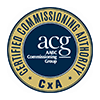 CxA certification is open to independent industry professionals who meet all education and experience prerequisites and implement commissioning processes in new and existing buildings.
CxA certification is open to independent industry professionals who meet all education and experience prerequisites and implement commissioning processes in new and existing buildings. The Energy Management Process Seminar is designed to help candidates understand the energy management process and how it can be applied and serves as the final preparation for the Energy Management Professional (EMP) exam.
The Energy Management Process Seminar is designed to help candidates understand the energy management process and how it can be applied and serves as the final preparation for the Energy Management Professional (EMP) exam.


